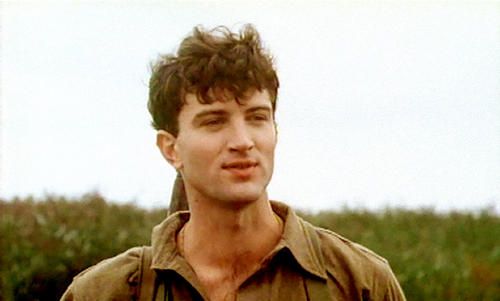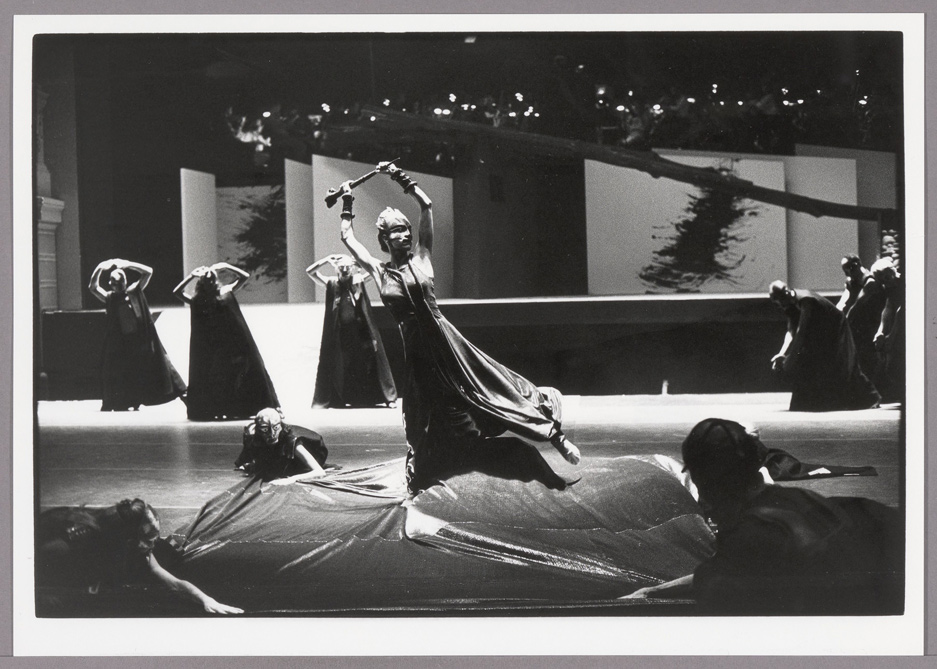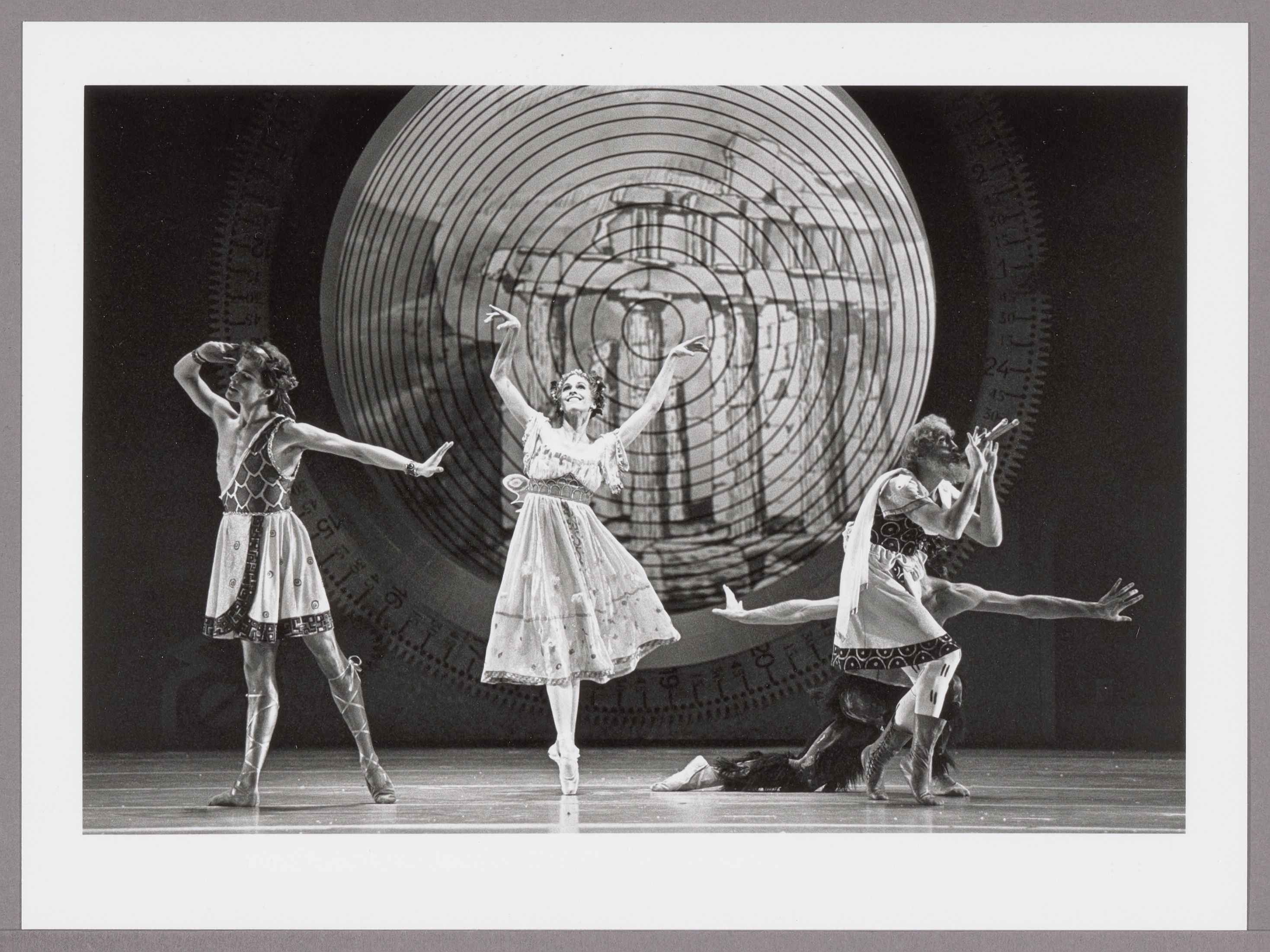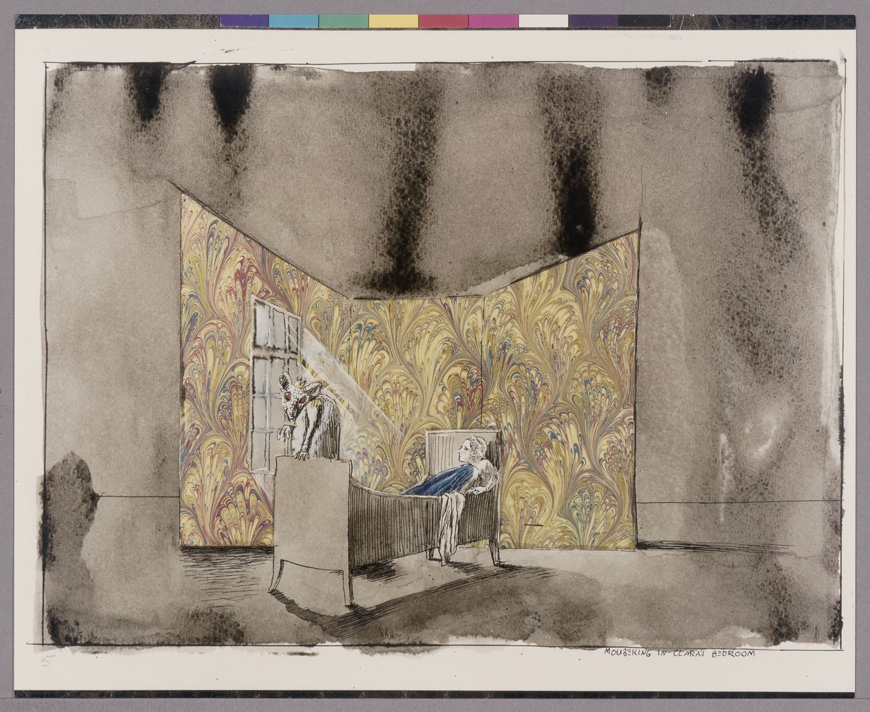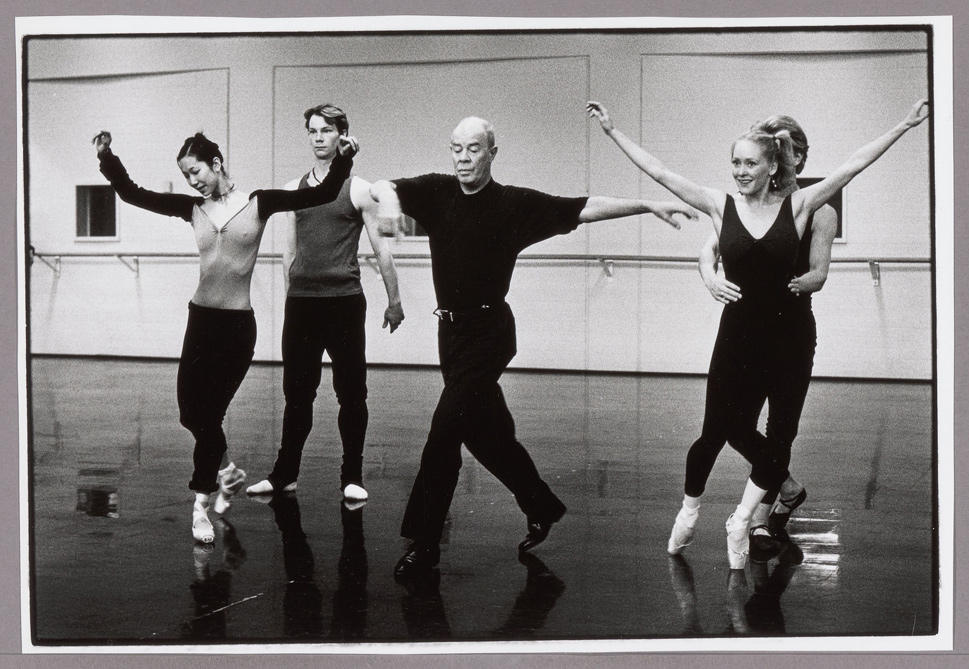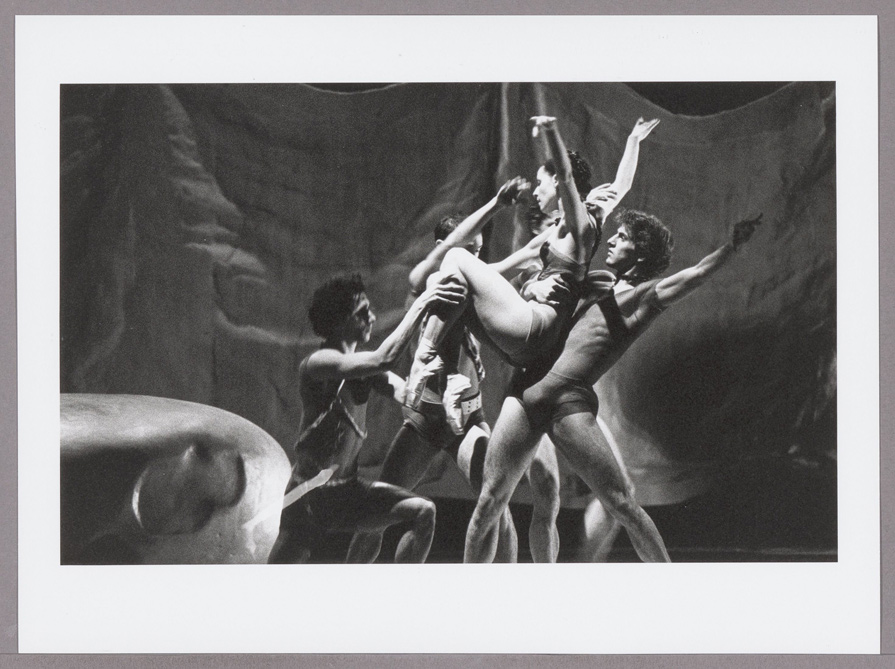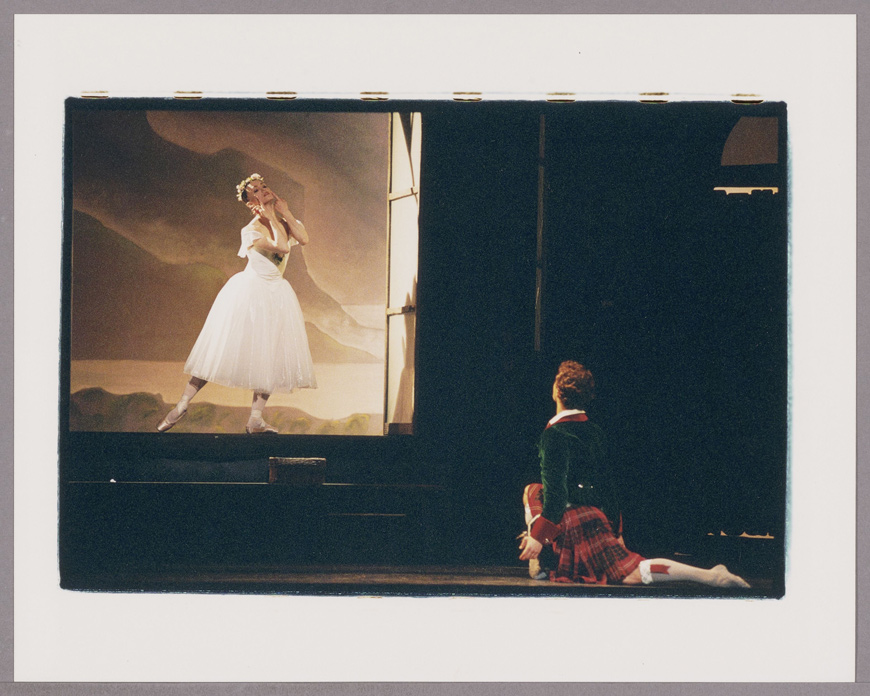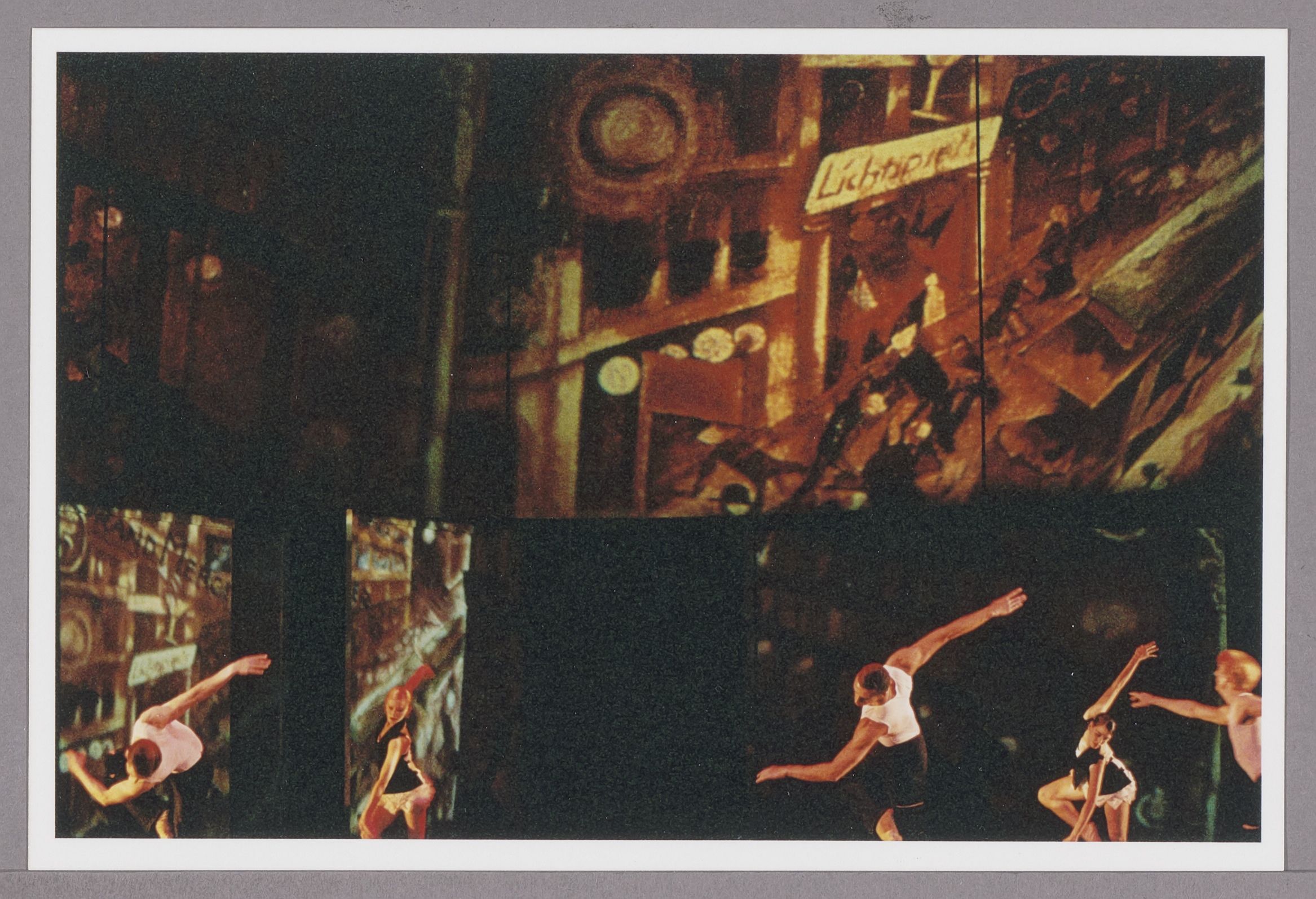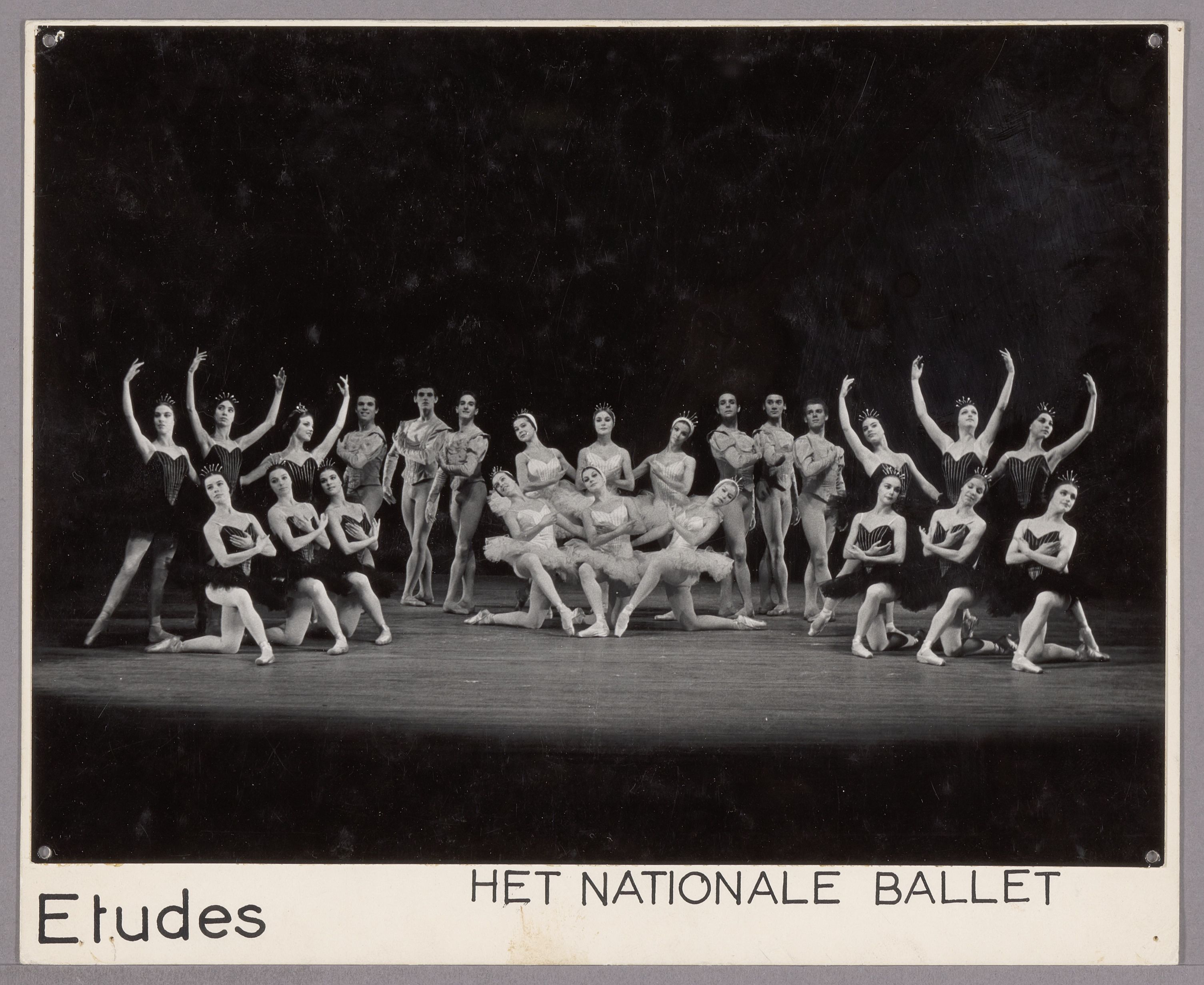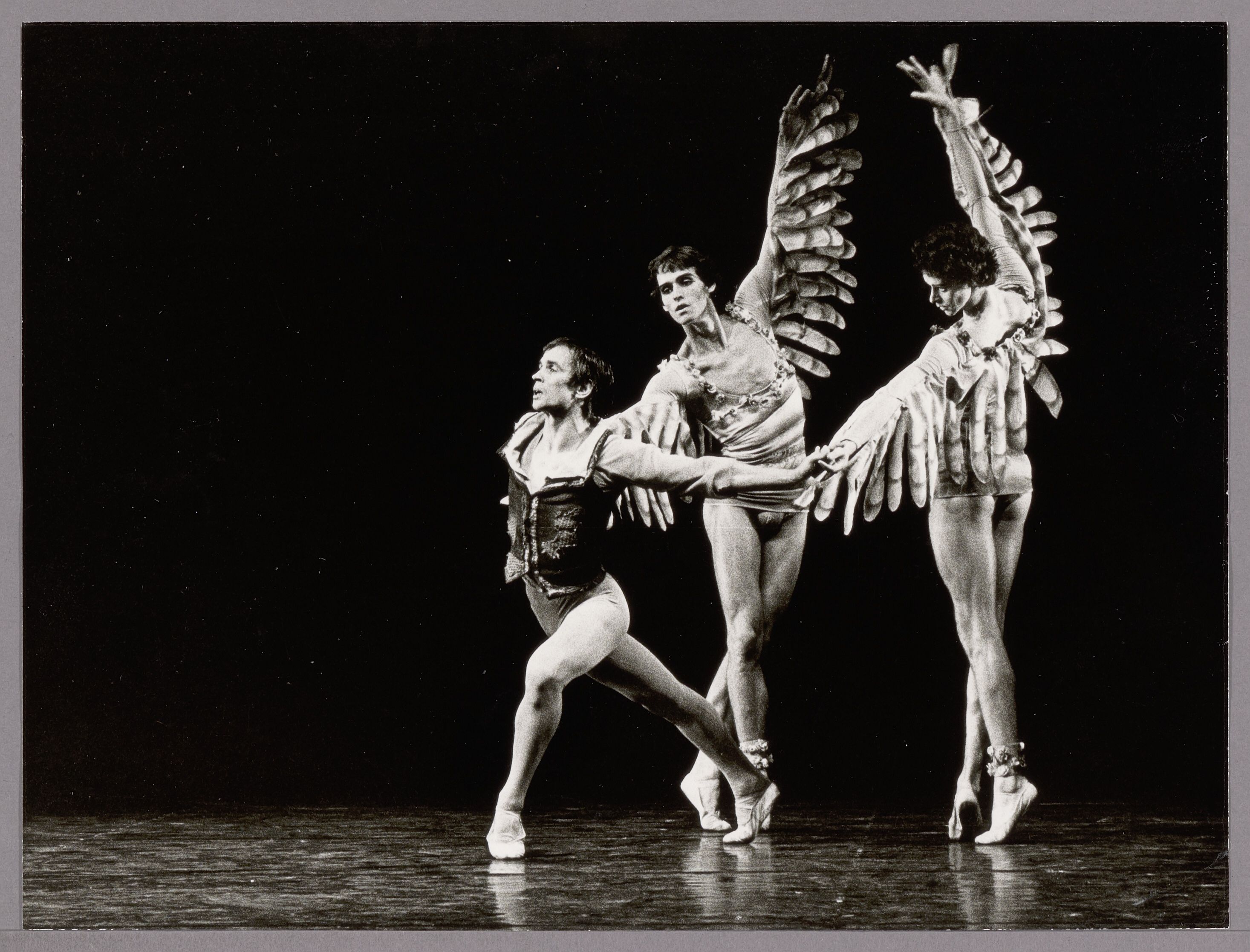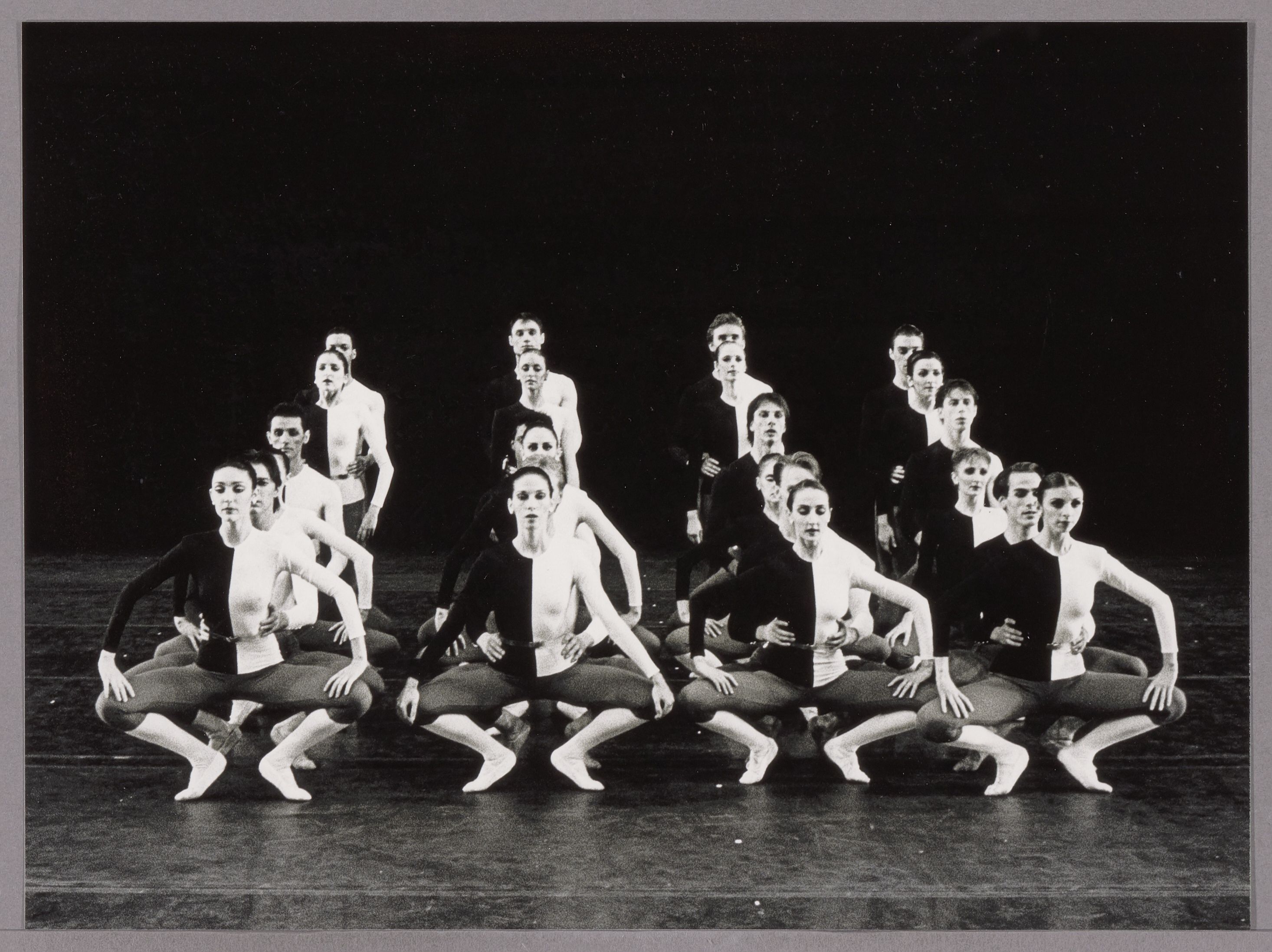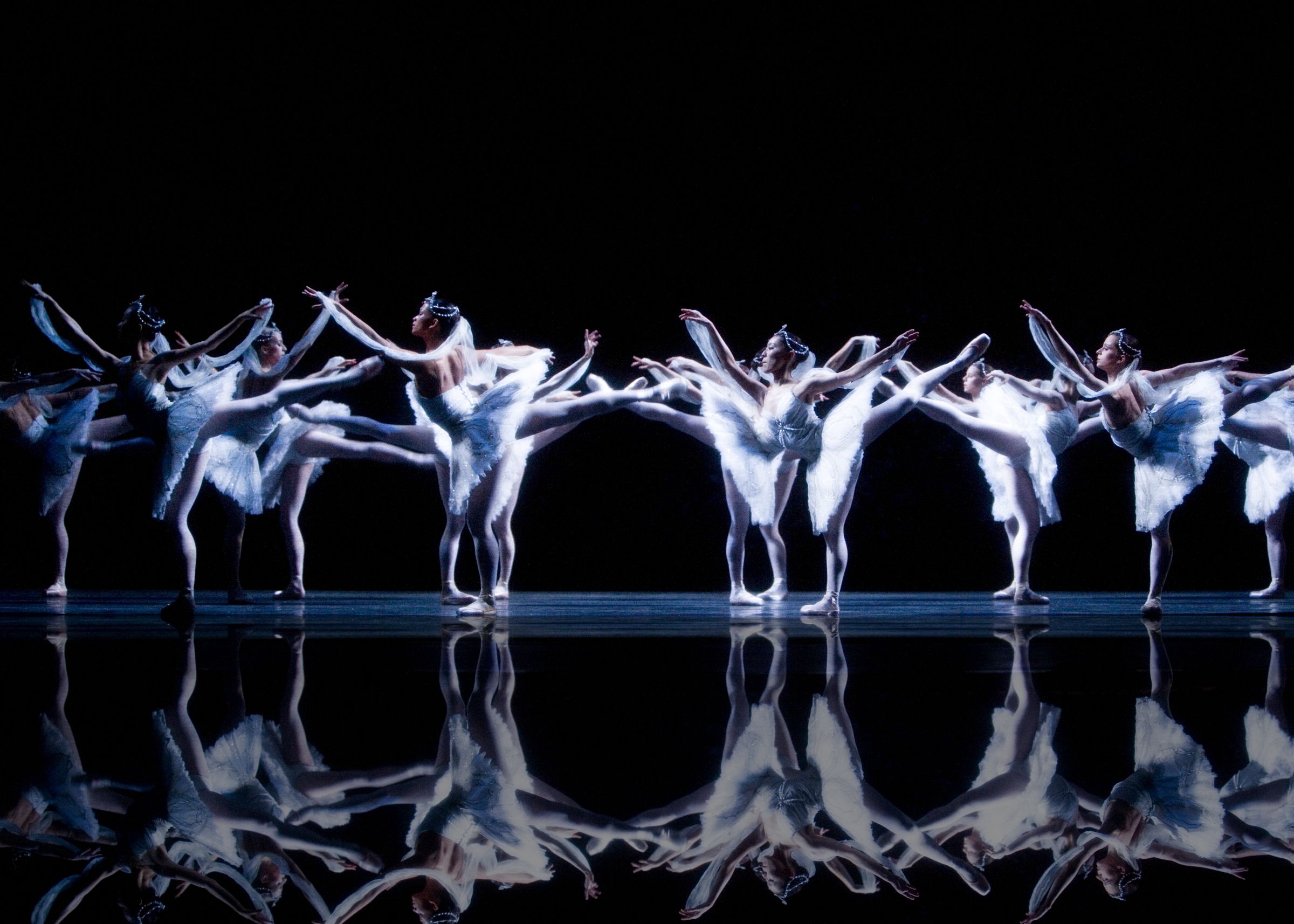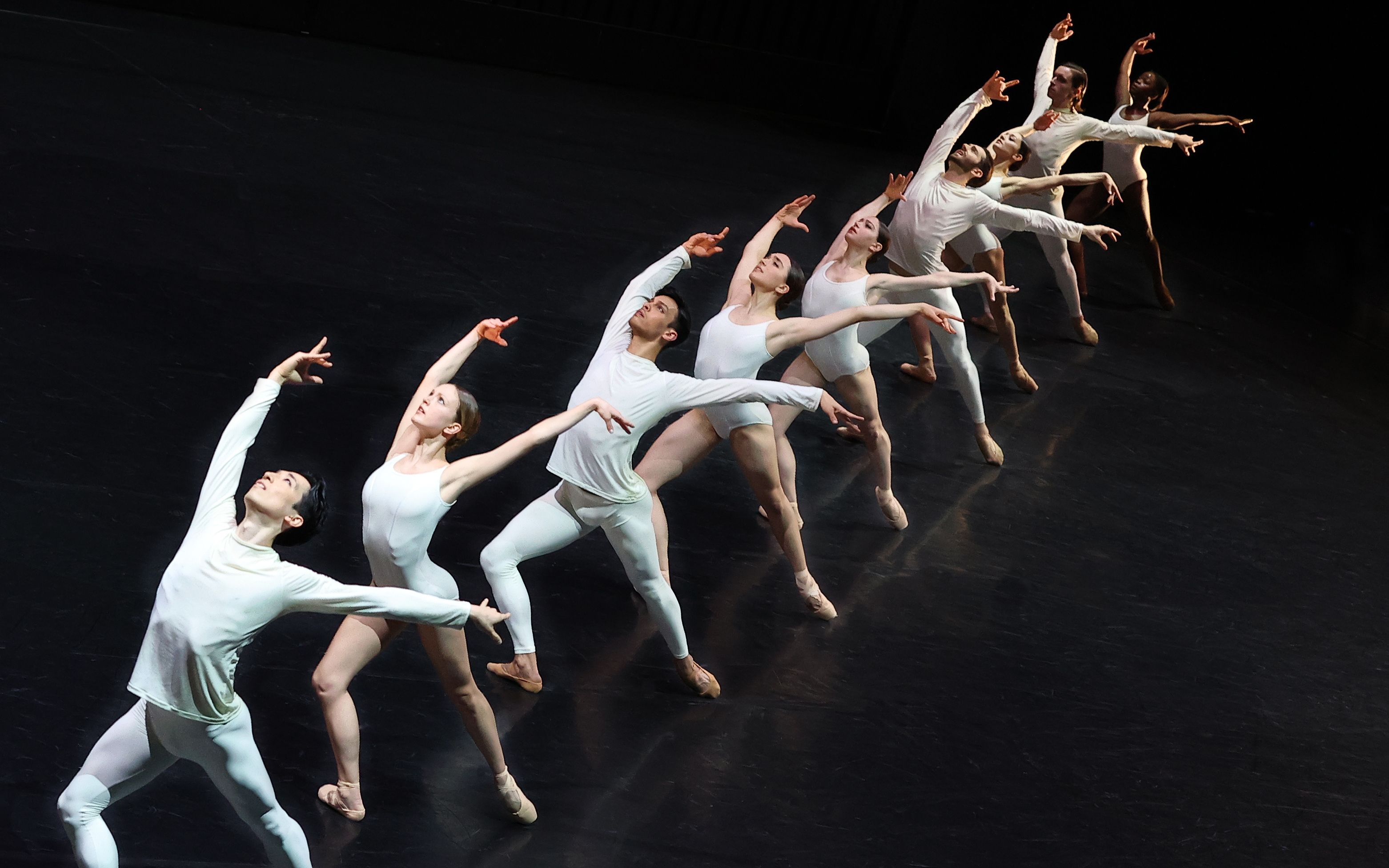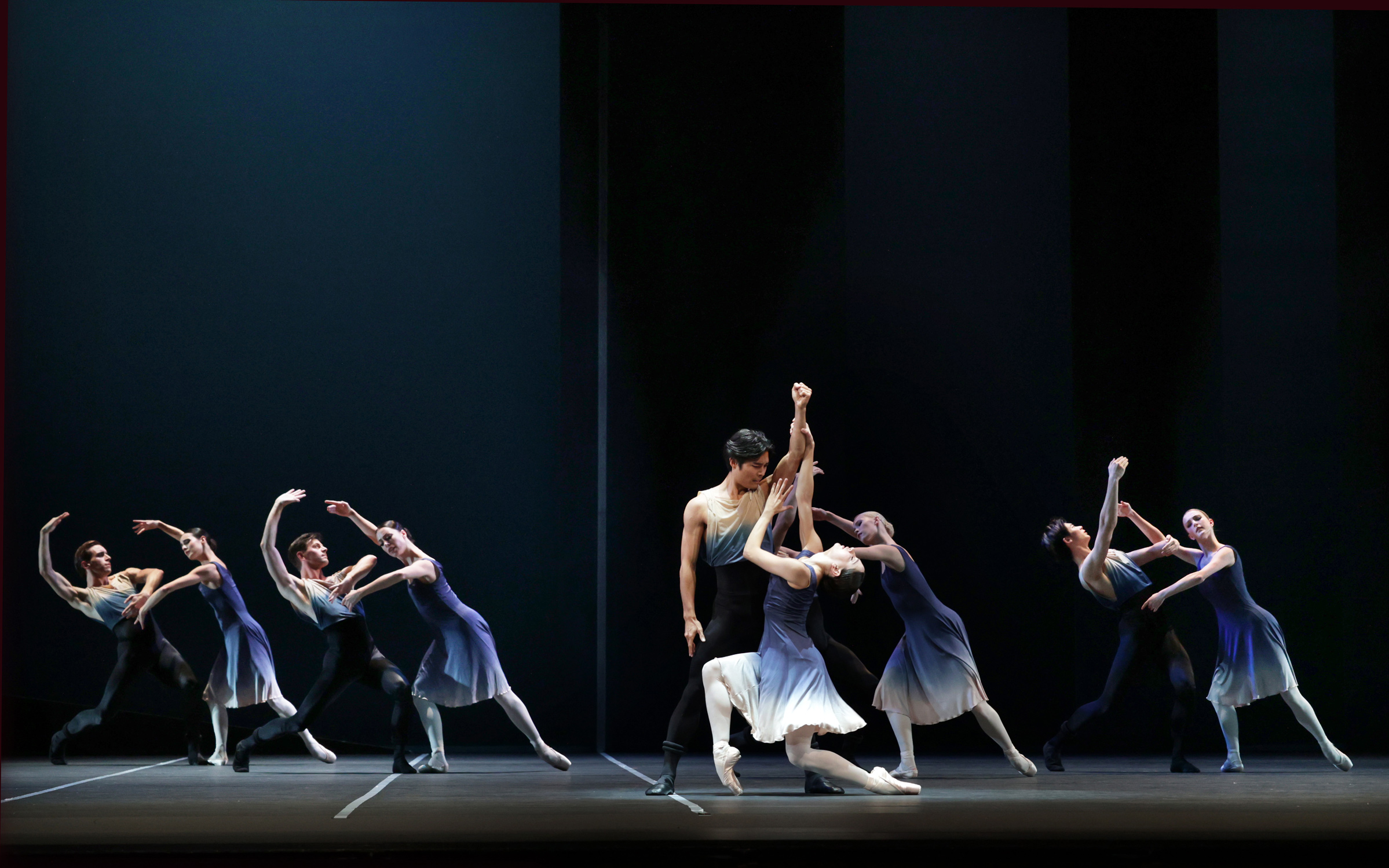
The history of Dutch National Ballet
Explore the rich history of Dutch National Ballet through this timeline, showcasing highlights from its repertoire and tracing the company’s development since its founding in 1961. Immerse yourself in captivating stories and enjoy a wealth of rarely-seen archival images.
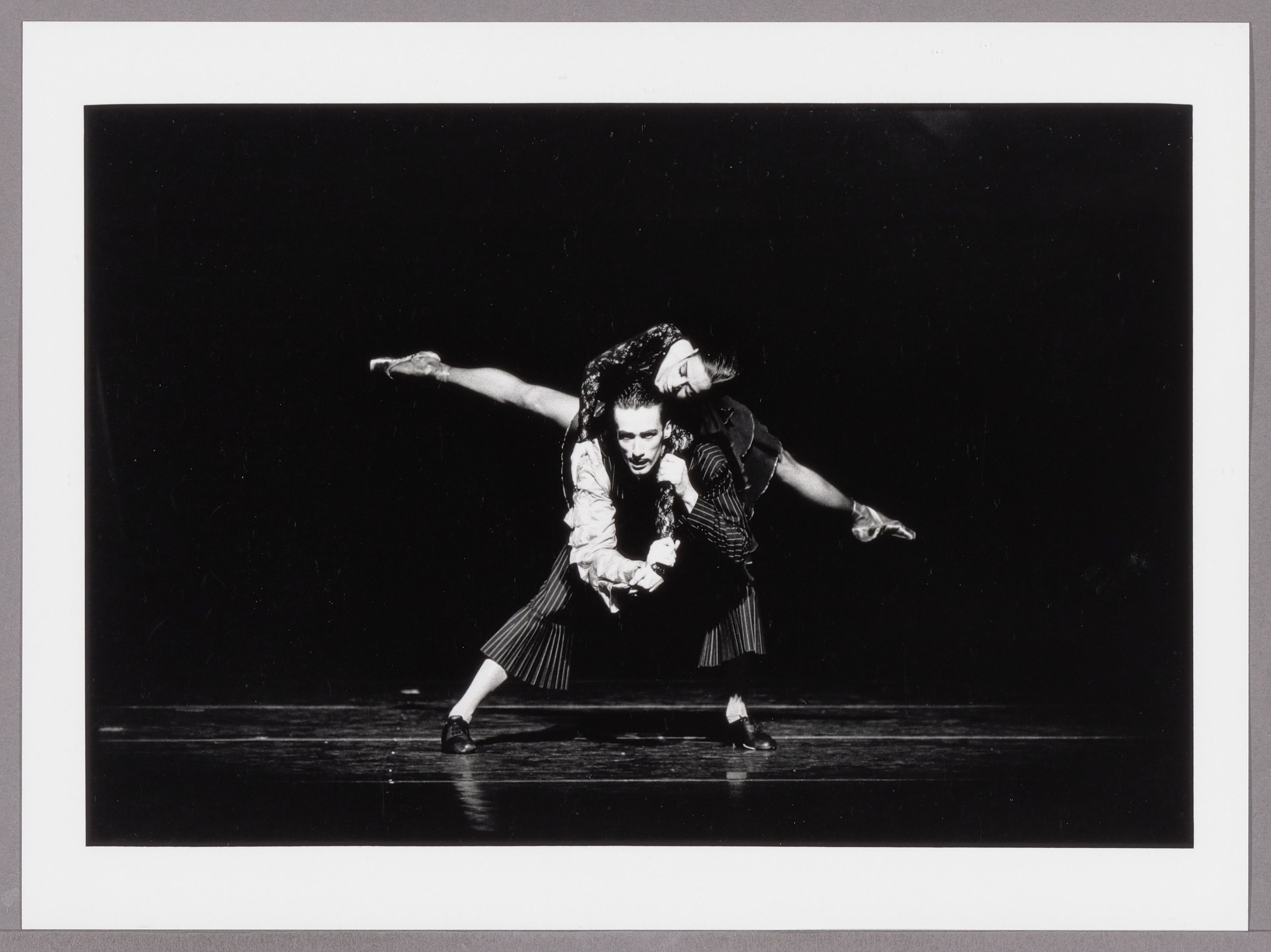
The 90s
- 151 New productions
- 125 World premieres
91 / 92
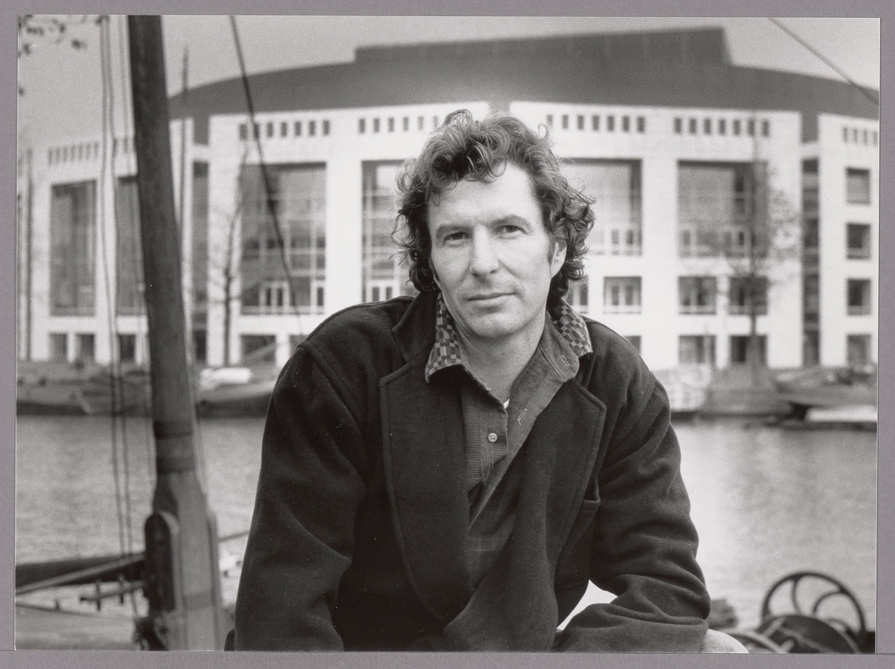
Wayne Eagling starts as artistic director
The Canadian dancer and choreographer Wayne Eagling (1950), former principal dancer with The Royal Ballet in London, succeeds Rudi van Dantzig as artistic director of Dutch National Ballet at the start of the 1991/1992 season. In the following years, Eagling raises the standard of the company even further, through his emphasis on technical perfection.
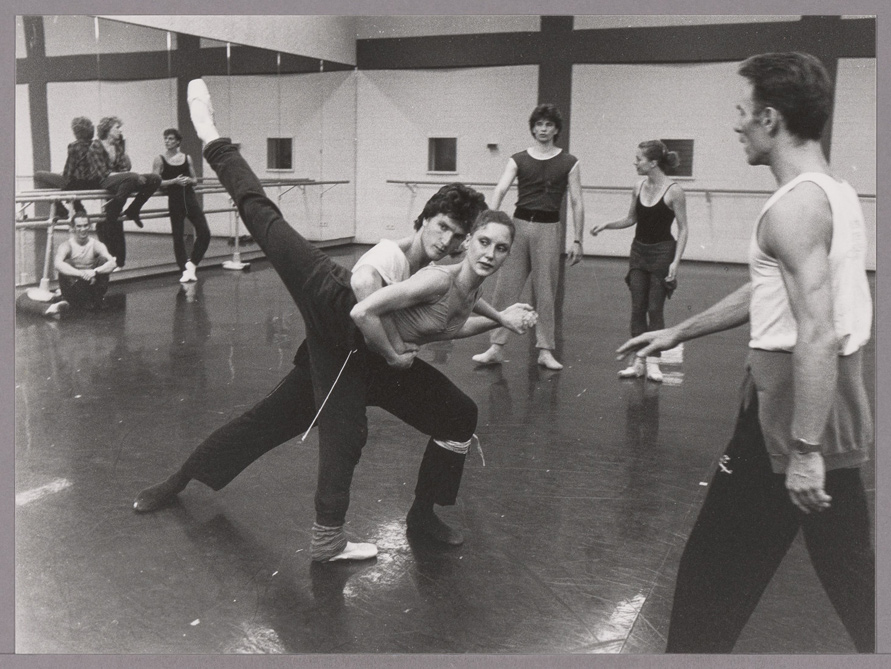
Four Sections
After creating several works for the annual choreographic workshop and doing the choreography for Gerardjan Rijnders' Bacchanten, Ted Brandsen (artistic director of Dutch National Ballet since 2003) choreographs his first autonomous work for Dutch National Ballet’s regular programme. His Four Sections, to the music of the same name by Steve Reich, is received with great enthusiasm.

Touch your coolness to my fevered brow
One of the first new names that Wayne Eagling introduces is Ashley Page. The British choreographer, known in his homeland as 'The Royal Maverick' because of his rebellious works, creates Touch your coolness to my fevered brow. Algemeen Dagblad calls it “a splendid piece”, in which he “transports the viewer to a surrealist fairground filled with secret fantasies”.
Guest artists
On 1 January 1991, the Canadian star dancers Evelyn Hart and Rex Harrington dance the main roles in Rudi van Dantzig’s Romeo and Juliet, at Dutch National Ballet’s annual New Year Gala. “Juliet’s emotions were portrayed with a fervour and depth that is rarely seen, and Romeo left no wish unfulfilled as a dance partner and lover”, writes De Telegraaf about their performance.

For a Lost Soldier
Director Roeland Kerbosch makes a film of Rudi van Dantzig’s award-winning, autobiographical debut novel, For a Lost Soldier, about his memories of the winter of starvation in 1944/1945, which he spent in Friesland.
92 / 93

Programme in the round
Dutch National Ballet gives its first performance in the round in the Music Theatre. On a stage built in front of the proscenium, the company dances Maguy Marin’s Groosland and Hans van Manen’s Situation, as well as the first work created for the company’s regular programme by dancer/choreographer Krzysztof Pastor: Shostakovich Chamber Symphony, which has a large cast.
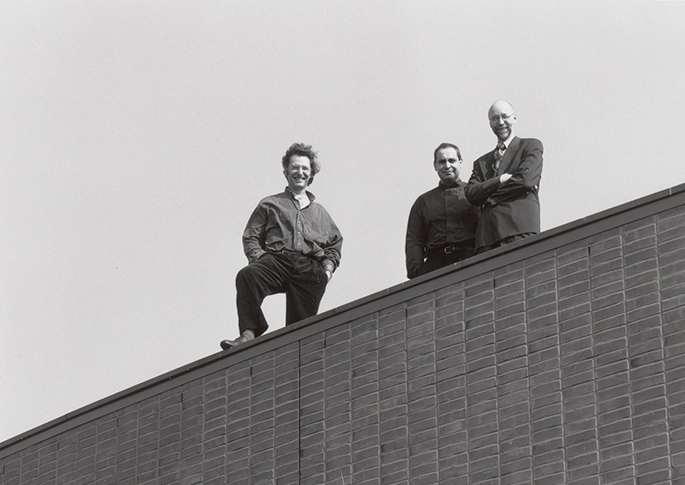
New management structure and joint education department
After the boards of Dutch National Ballet and De Nederlandse Opera merged in 1991 to form the foundation board of the Music Theatre (now Dutch National Opera & Ballet), from October 1992 the management of the theatre now comprises the directors of both companies. Along with the three assistant directors of the Theatre Organisation, Technical Organisation and Guest Programming departments, from now on they form the Music Theatre team of directors. From this season on, the organisation also has a joint Education Department, led by Liesbeth Osse.
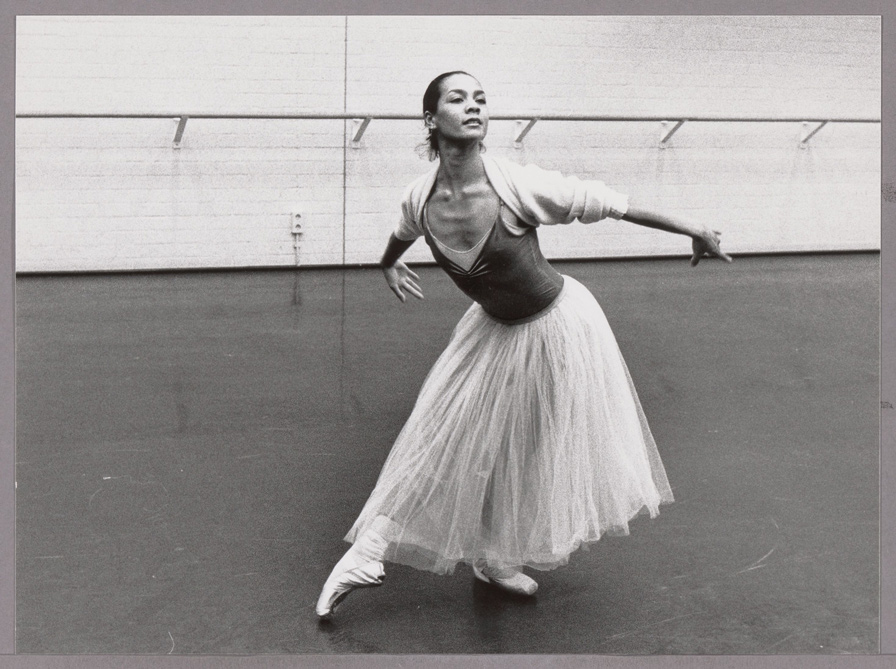
Merit Award for Karin Schnabel
In 1992, Dansersfonds '79 honours principal dancer Karin Schnabel with the Merit Award. Schnabel, who joined the group in 1974, made her debut as Juliet in Rudi van Dantzig’s Romeo and Juliet at the age of 20 and went on to dance the leading roles in Giselle, Cinderella and The Sleeping Beauty, among other ballets. For The Sleeping Beauty, she received personal coaching in London from Sir Peter Wright.
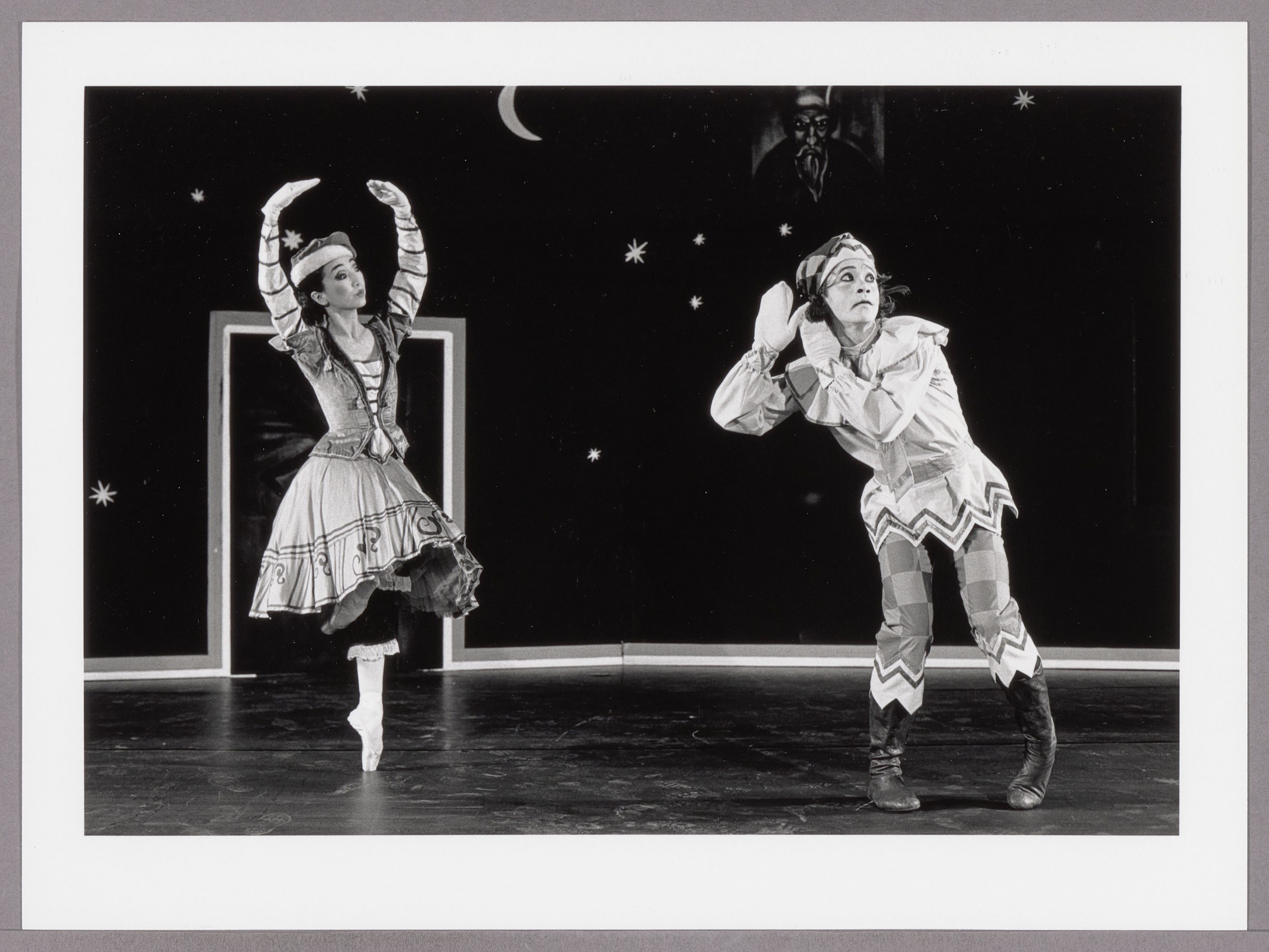
Christmas with Stravinsky
Christmas with Stravinsky is the first large-scale Stravinsky programme presented by Dutch National Ballet in the winter of 1992/1993. The programme includes revivals of three masterpieces from the repertoire of the famous Ballets Russes initiated by impresario Serge Diaghilev: Petrushka (1911) by Michel Fokine, Les Noces (1923) by Bronislava Nijinska and Apollon musagète (1928) by George Balanchine.
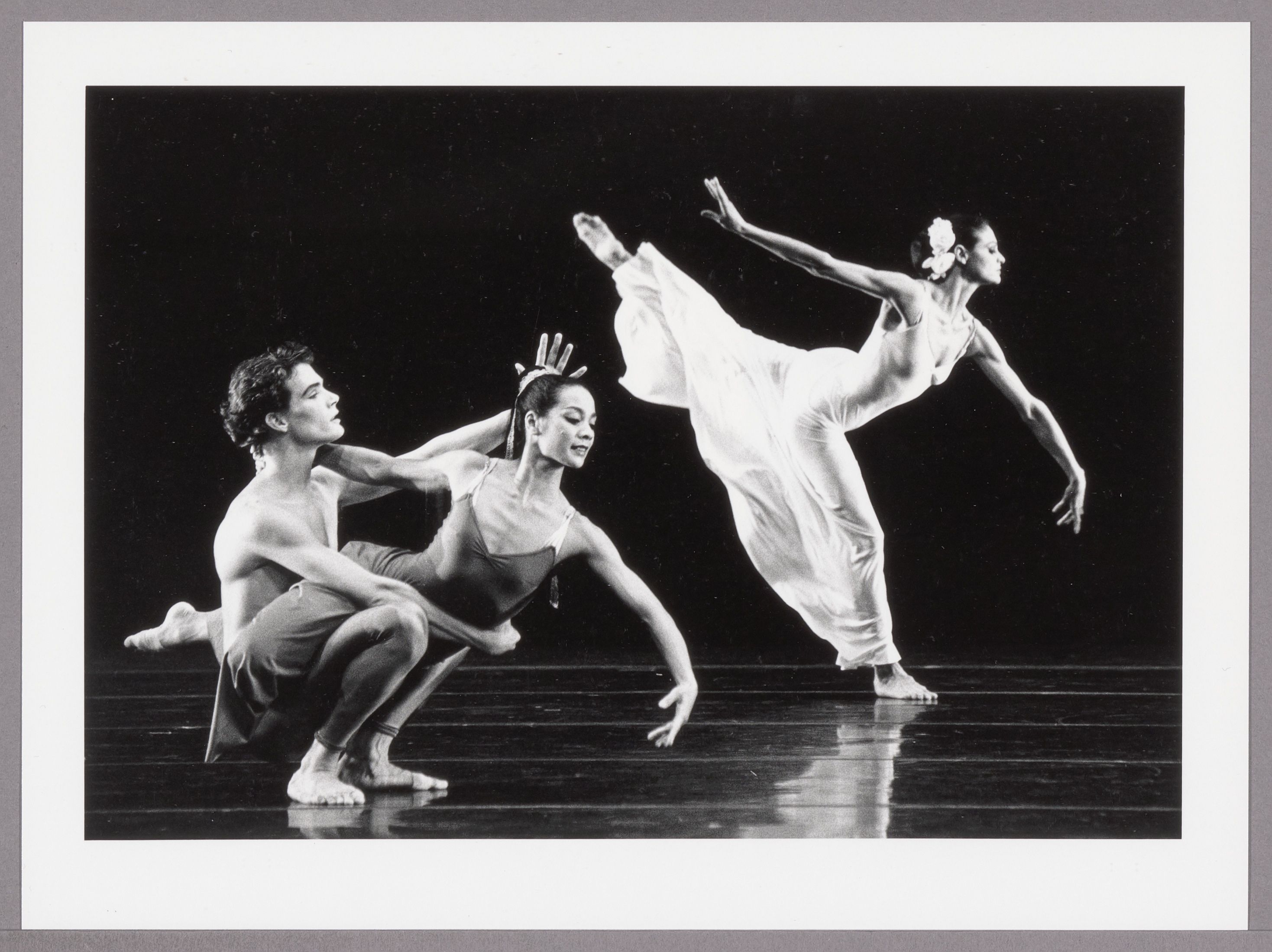
Martha Graham
Dutch National Ballet dances Diversion of Angels, its first work by Martha Graham, the ‘mother of American modern dance’. It is the first classically trained company worldwide to dance a Graham work. “Graham’s portrayal of the sublimating power of love was wonderfully cast (..) Eagling’s wish for more Graham classics is fully justified”, writes Trouw.
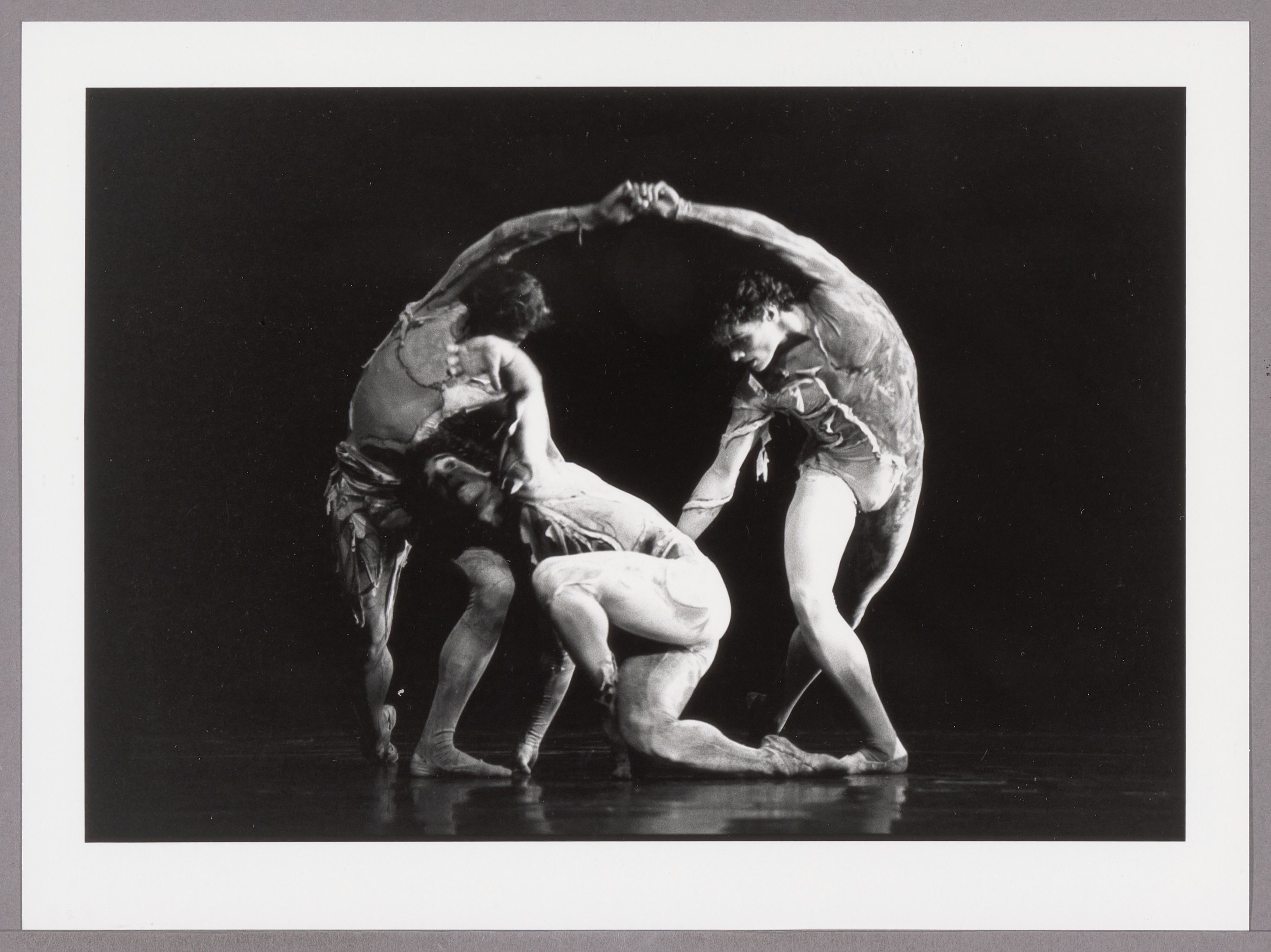
First ballets by Wayne Eagling
Artistic director Wayne Eagling creates his first work for Dutch National Ballet: Ruins of Time. It is a melancholy ballet, inspired by the death of star dancer Rudolf Nureyev (on 6 January 1993) and by 'all those who died before their time'. Later in the season, Dutch National Ballet gives its first performance of Eagling’s Frankenstein, created in 1985 for The Royal Ballet.
93 / 94
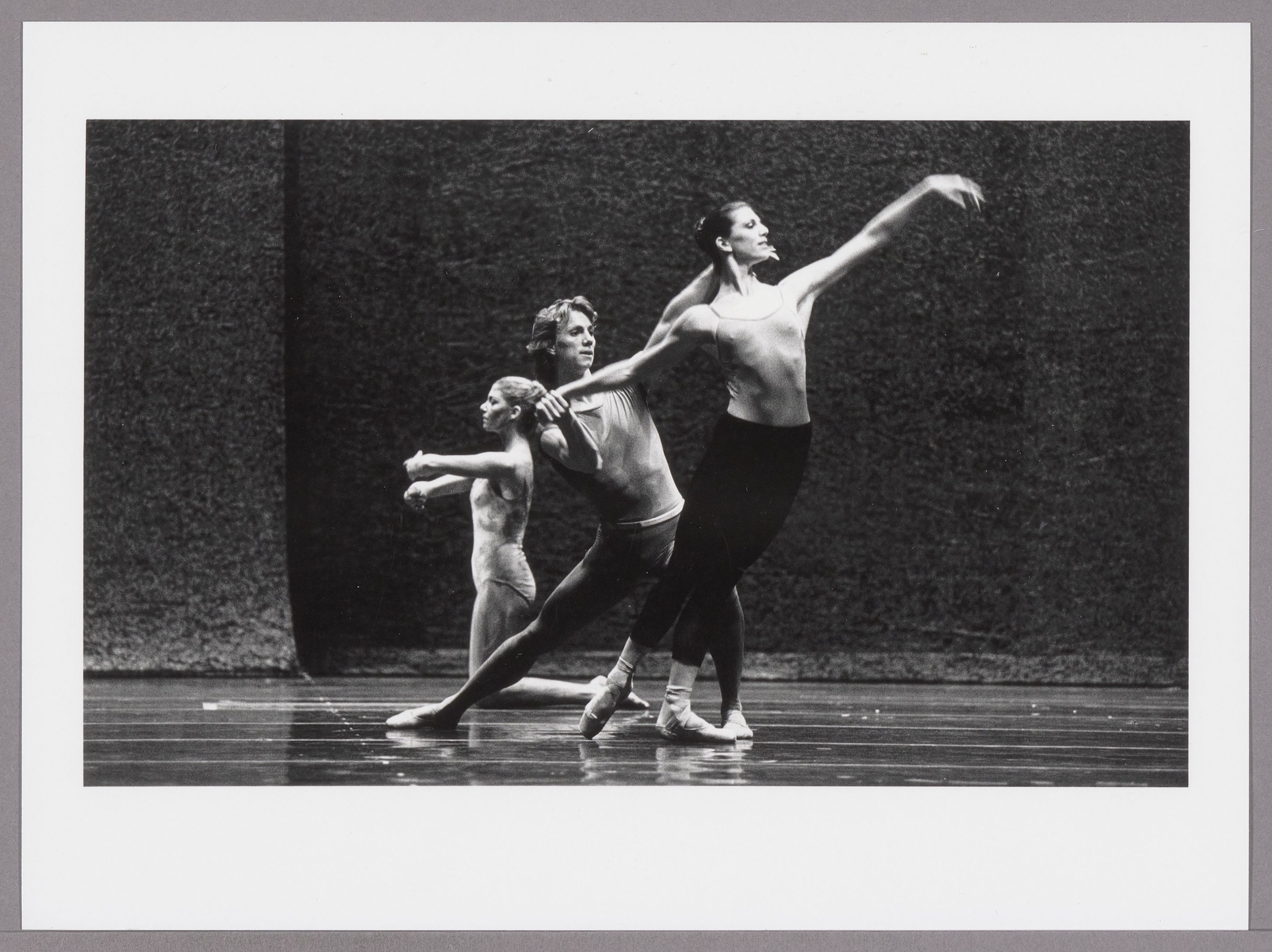
Complete Artifact in the repertoire
Following Dutch National Ballet’s presentation of the second part of William Forsythe’s Artifact, in 1991, this season the company takes the complete masterpiece into its repertoire. The world premiere of the piece, by Ballett Frankfurt in 1984, ‘came as a bombshell’. NRC Handelsblad writes about the premiere by Dutch National Ballet, “Re-watching Artifact confirmed Forsythe’s unique position in the choreographic landscape. The richness of variation and the way he strips sections to the bone and crafts them into new shapes remain overwhelming, as does his suggestive and bewildering theatrical mastery.”
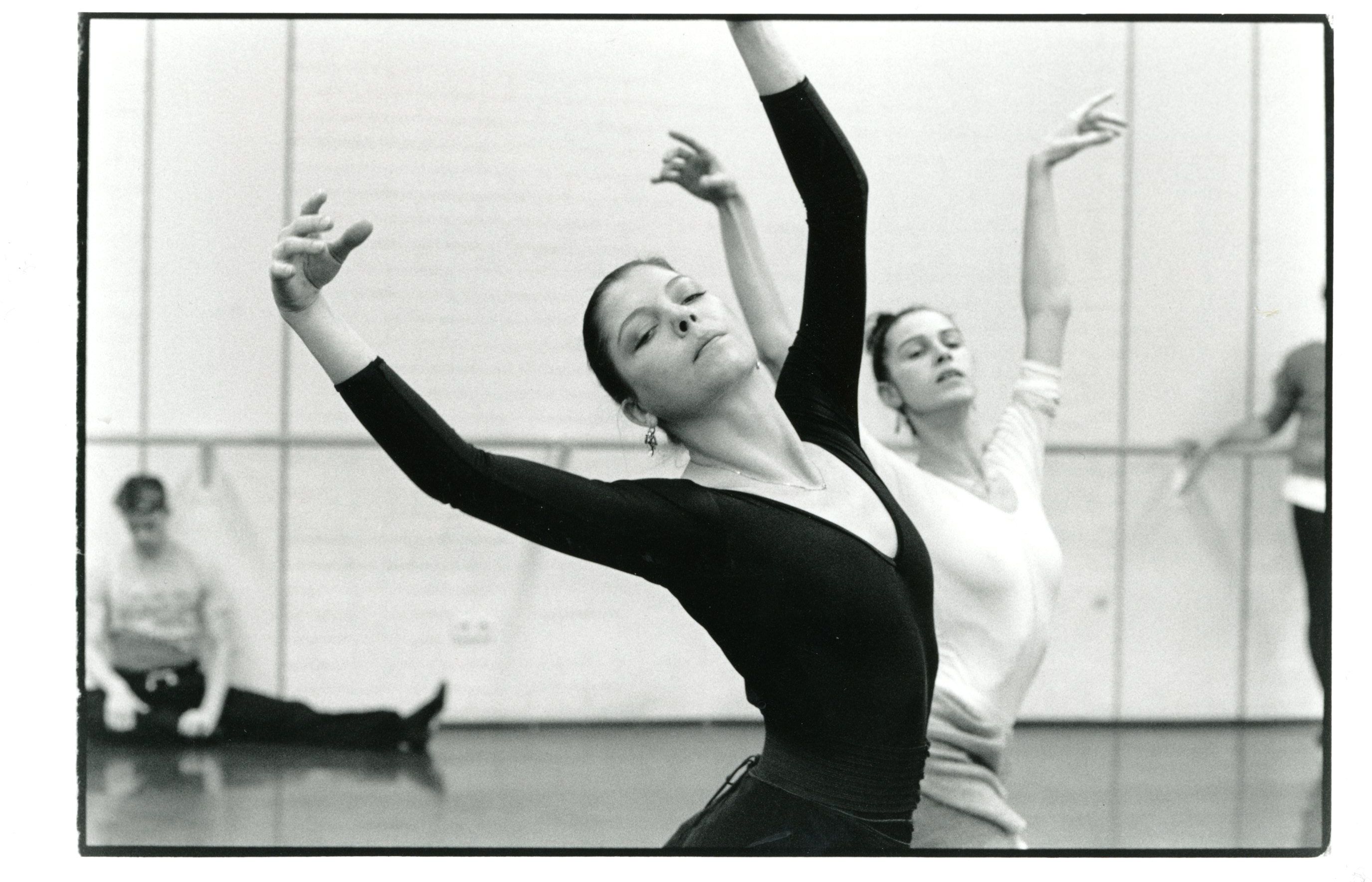
Golden Theatre Dance Prize for Rachel Beaujean
In October 1993, soloist Rachel Beaujean is awarded the Golden Theatre Dance Prize by the VSCD. The jury praises her for her ability to dance a variety of styles equally well and for her strong stage presence, whether she is dancing a solo or in a group, stating, “She once said herself that the key to her dancing was willpower and conviction. To that we can add dedication and devotion.”
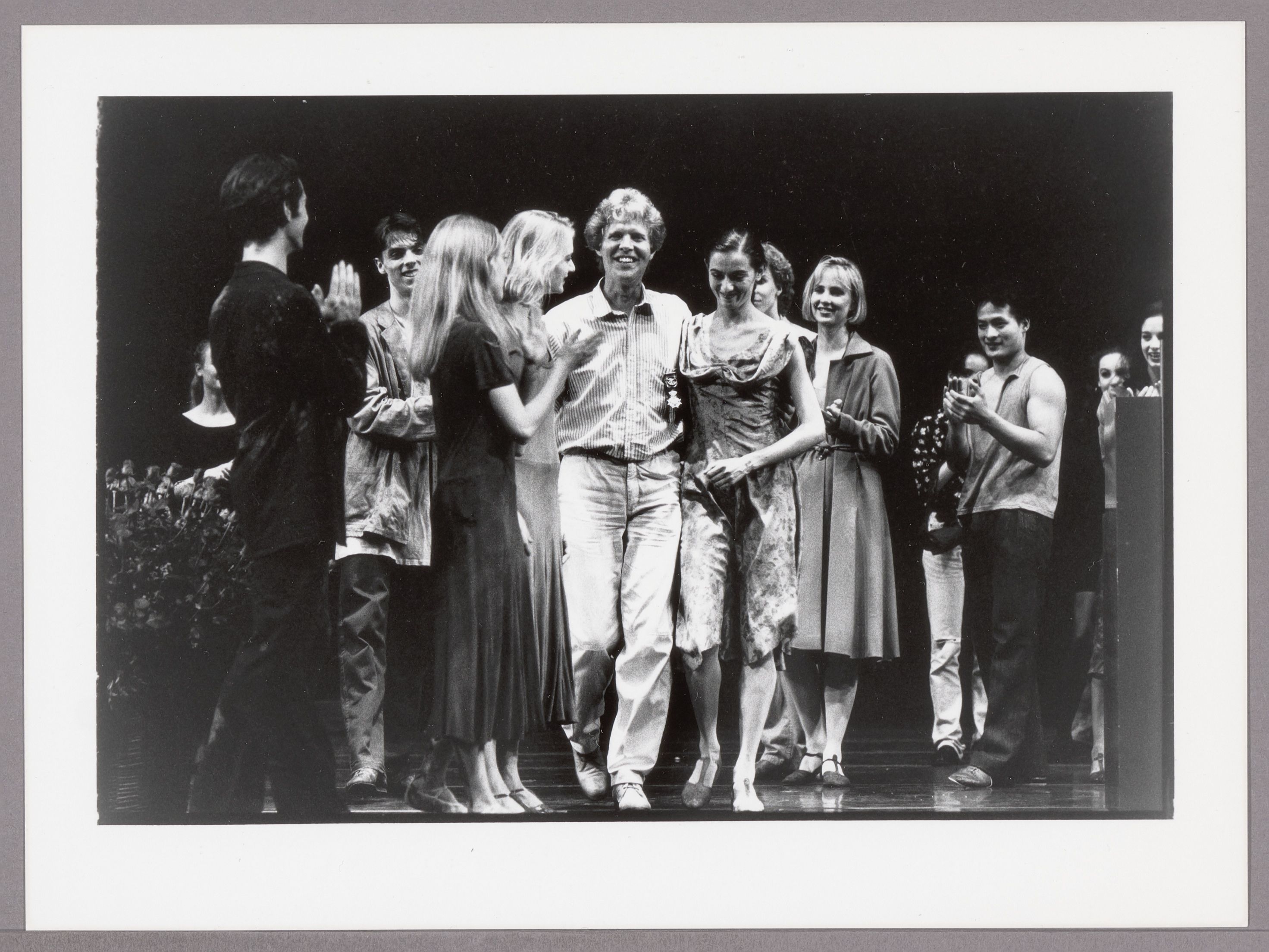
Rudi van Dantzig leaves the position of resident choreographer
At the end of the 1993/1994 season, Dutch National Ballet says farewell to Rudi van Dantzig, who had stayed on as resident choreographer after leaving the position of artistic director in 1991. For the occasion, the company dances a tribute programme, comprising his debut work Nachteiland and the world premieres of Van Dantzig’s Pleisterplaats and Toer van Schayk’s De omkeerbaarheid van roest, as well as Collective Symphony by Van Dantzig, Van Manen and Van Schayk.
94 / 95
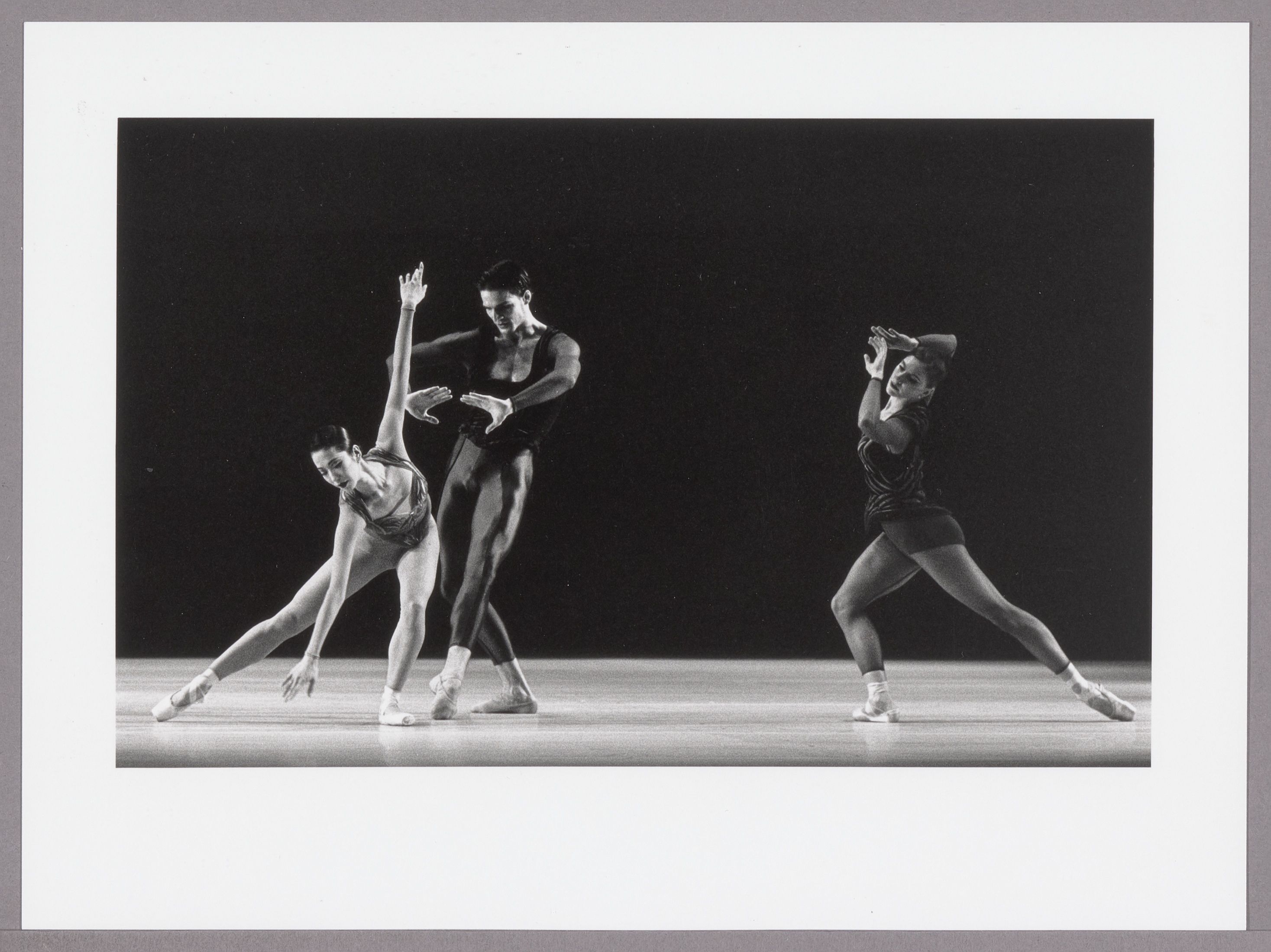
Lisbon Cultural Capital of Europe
A highlight of this season is Dutch National Ballet’s appearance at the event Lisbon Cultural Capital of Europe, in 1994. William Forsythe’s Artifact gets an enthusiastic reception at three sold-out performances at the Centro Cultural de Bélem.
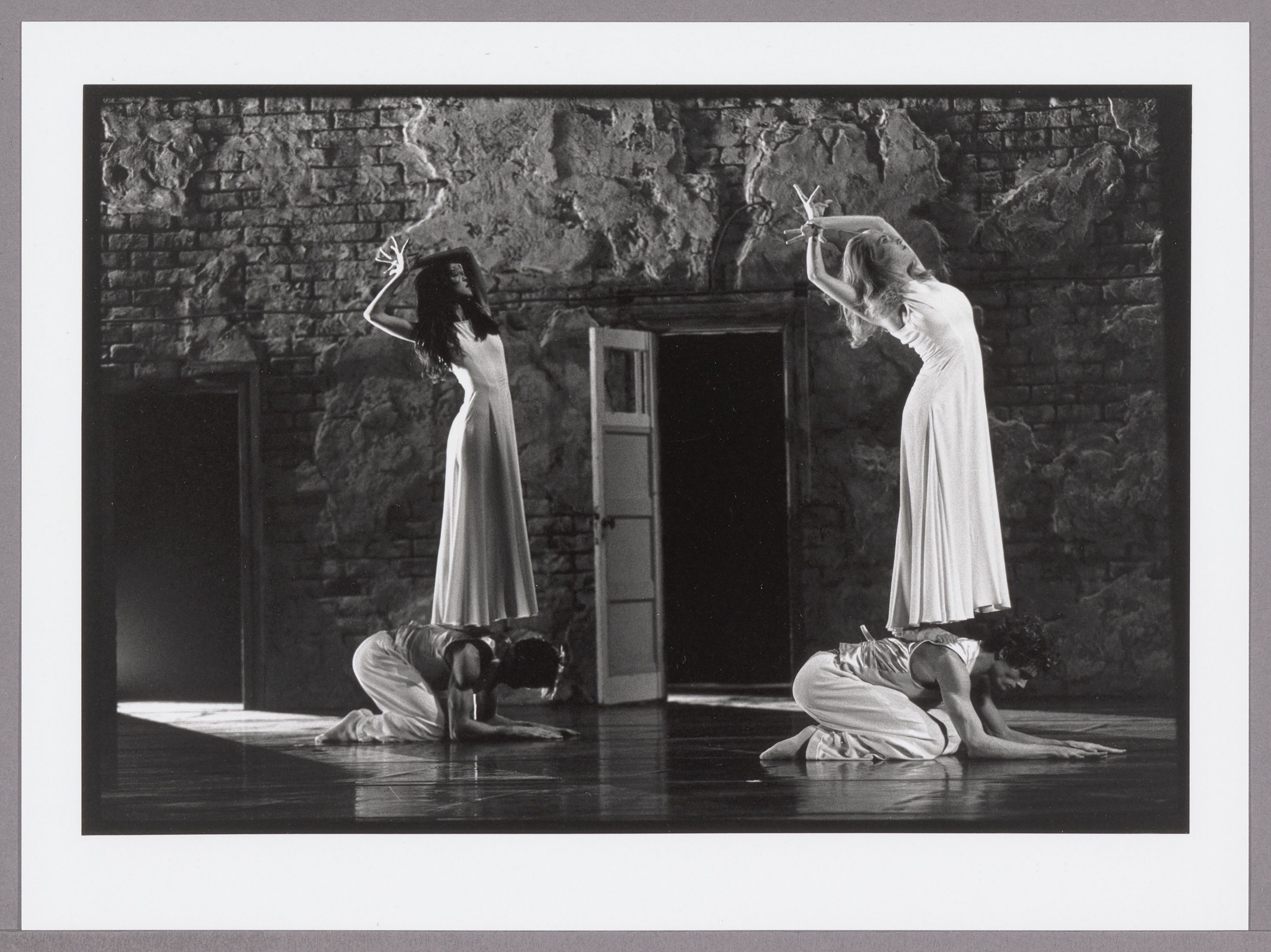
Two programmes in Carré
In October 1994, Dutch National Ballet presents two programmes in Theater Carré. The first comprises the world premiere of Even the Angels fall… by the rising French-Algerian choreographer Redha Benteifour, in combination with Hans van Manen’s iconic video ballet Live. The second comprises the world premiere of Toer van Schayk’s full-length Amphitheater, in which he “summarises forty years of artistry in dance”, according to Trouw.
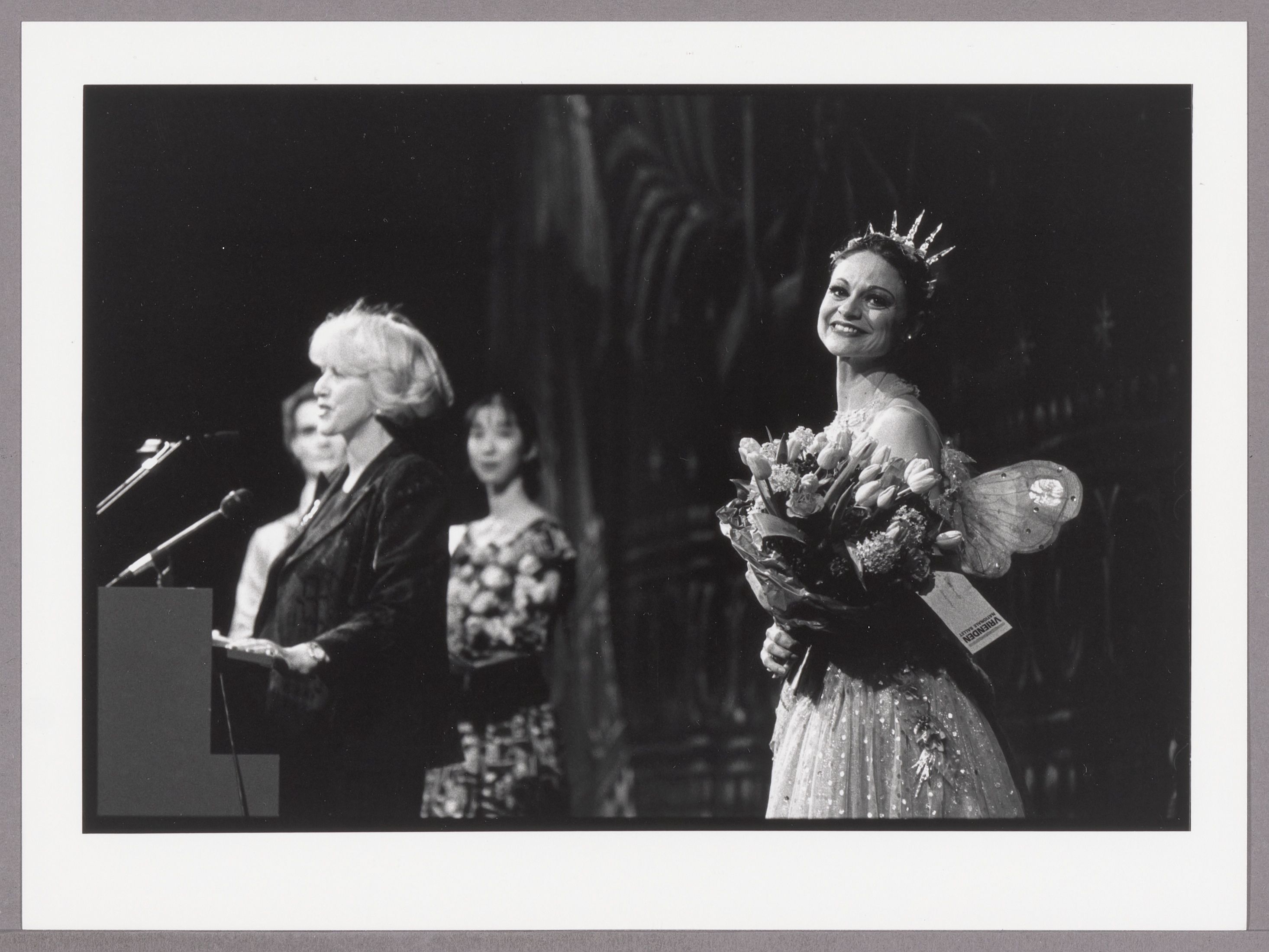
Golden Theatre Dance Prize for Jeanette Vondersaar
The VSCD awards the Golden Theatre Dance Prize 1994 to principal dancer Jeanette Vondersaar. “She has remarkable technique and enormous energy. Her inner drive and sensual, temperamental presence make her a powerful female soloist”, states the jury. This season, Vondersaar also receives the Alexandra Radius Prize from the Friends of Dutch National Ballet.
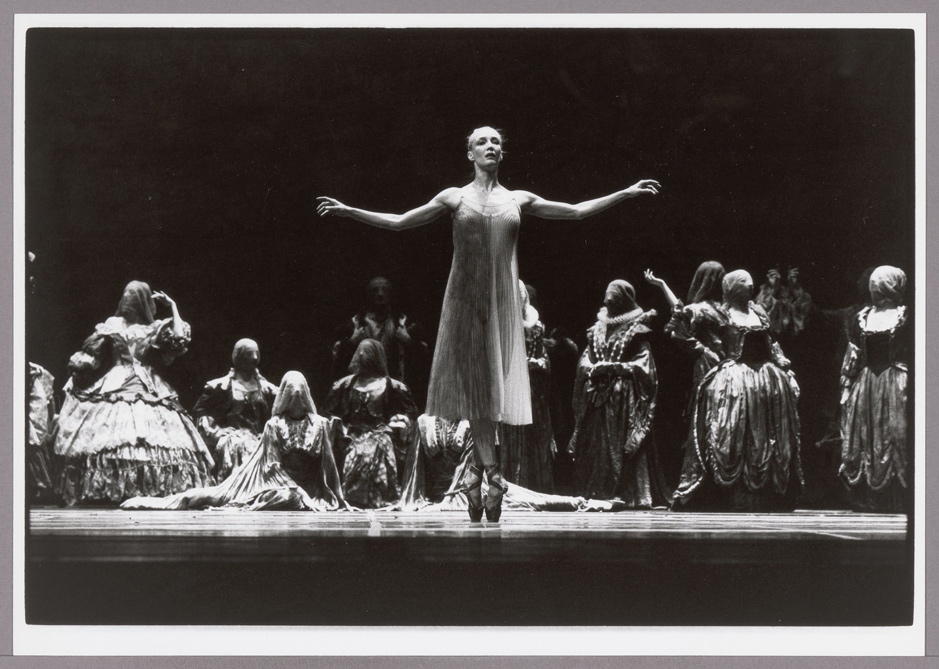
Jan Fabre
The most controversial premiere this season is Jan Fabre’s full-length Quando la terra si rimette in movimento, to music by the Polish composer Eugeniusz Knapik. Opinions about this creation are very divided, ranging from "Fabre creates a furore with this dance work – you could call it an exercise – but it remains powerfully beautiful” to “The main conclusion is that Fabre is not a choreographer (..) At a slow, monotonous tempo, the dancers hop and slide over the stage in changing formations”.

Ted Brandsens Blue Field
With Ted Brandsen's new creation Blue Field, which had its world premiere in Amsterdam on 23 February 1995, Dutch National Ballet performed in San Francisco in May 1995 at the United We Dance Festival, organised by the San Francisco Ballet to celebrate the 50th anniversary of the United Nations.
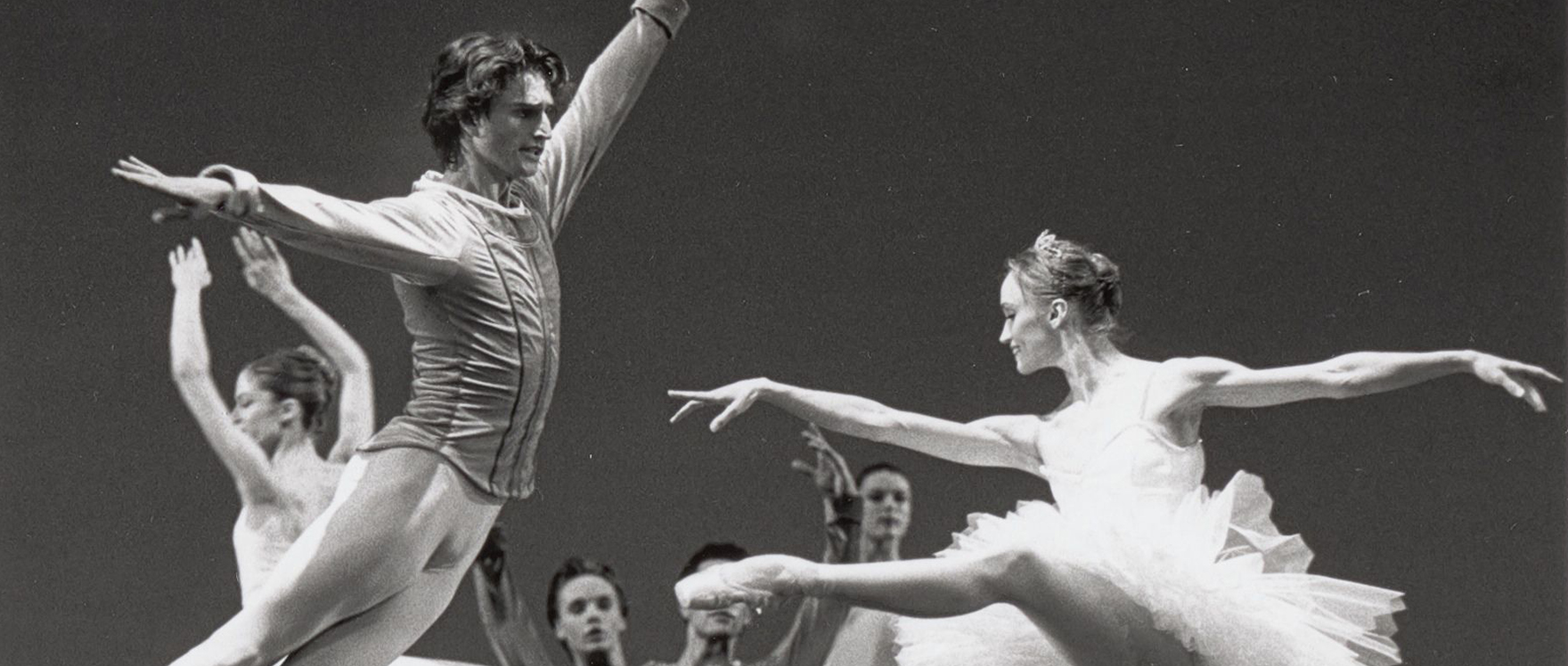
Stars exchange Kirov Ballet for Dutch National Ballet
This season, the Dutch National Ballet’s principal dancer ranks are swelled by the addition of two former stars of the famous Kirov Ballet (now Mariinsky Ballet), Larissa Lezhnina and Alexander Gouliaev. On a tour to Amsterdam in 1992, the dancers were spotted at a rehearsal by artistic director Wayne Eagling, who offered them a contract on the spot.
95 / 96
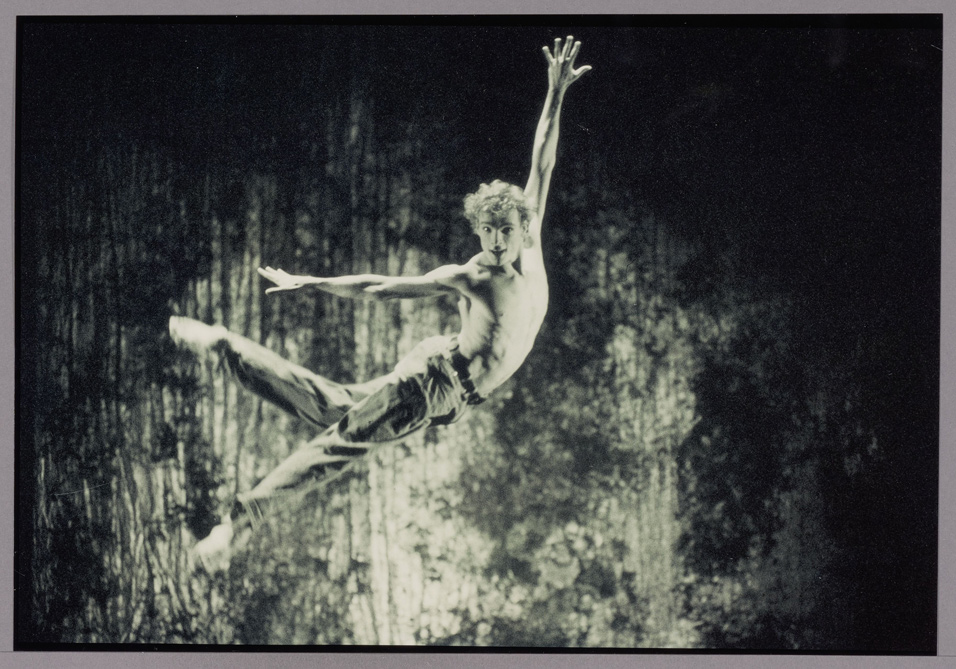
Boris de Leeuw promoted to principal
At the start of the 1995/1996 season, the 23-year-old Boris de Leeuw is promoted to principal dancer, as the first Dutch male dancer to join that rank since Henny Jurriëns. He is also the youngest Dutch principal dancer with Dutch National Ballet since its foundation in 1961. Only Olga de Haas was younger (aged 19) when she was promoted to principal in 1964. In January 1996, De Leeuw is presented with the Alexandra Radius Prize, after already receiving the Incentive Award from Stichting Dansersfonds '79 in 1993.
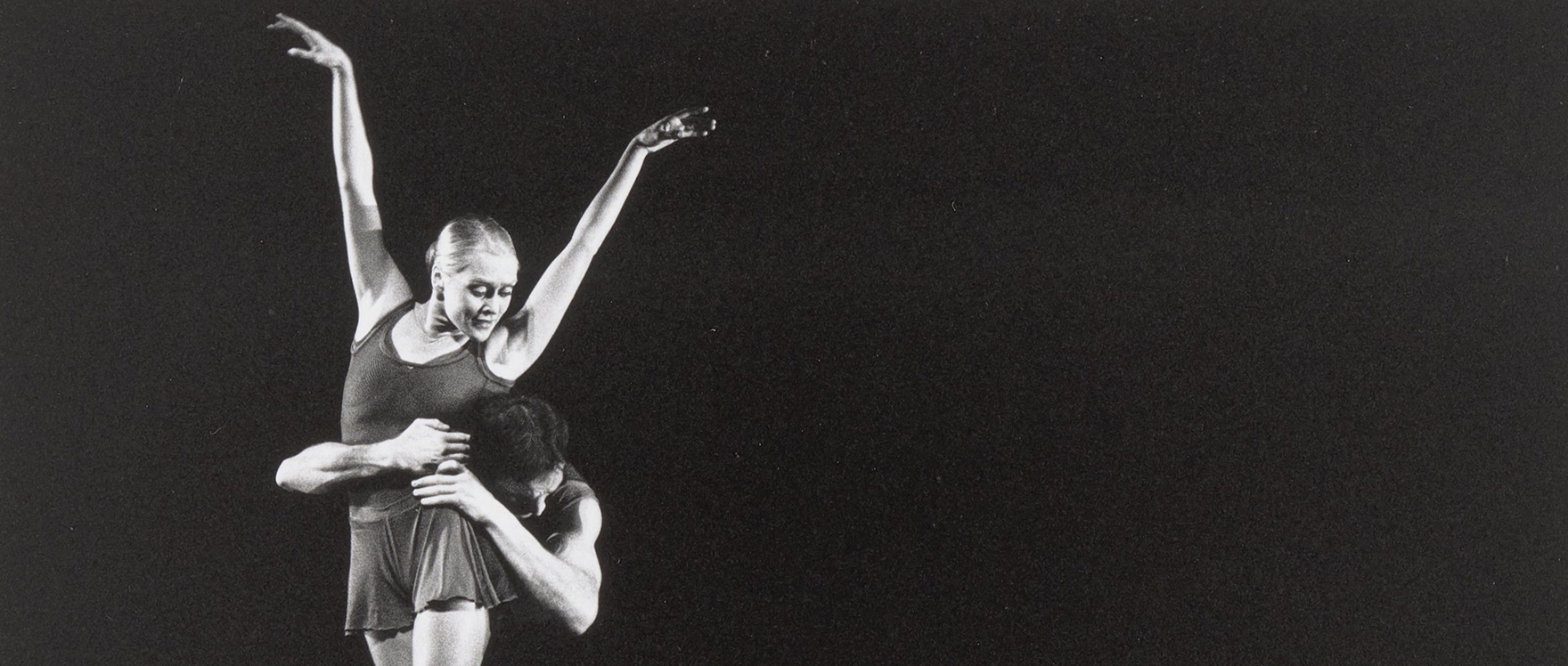
Awards for Marieke Simons and Rachel Beaujean
The 25-year-old Marieke Simons, coryphée with Dutch National Ballet, receives the Golden Theatre Dance Prize from the VSCD. The jury calls her “an extremely versatile dancer, who practises her profession with technical perfection and great vitality”. This season, soloist Rachel Beaujean receives the Merit Award from Stichting Dansersfonds '79.
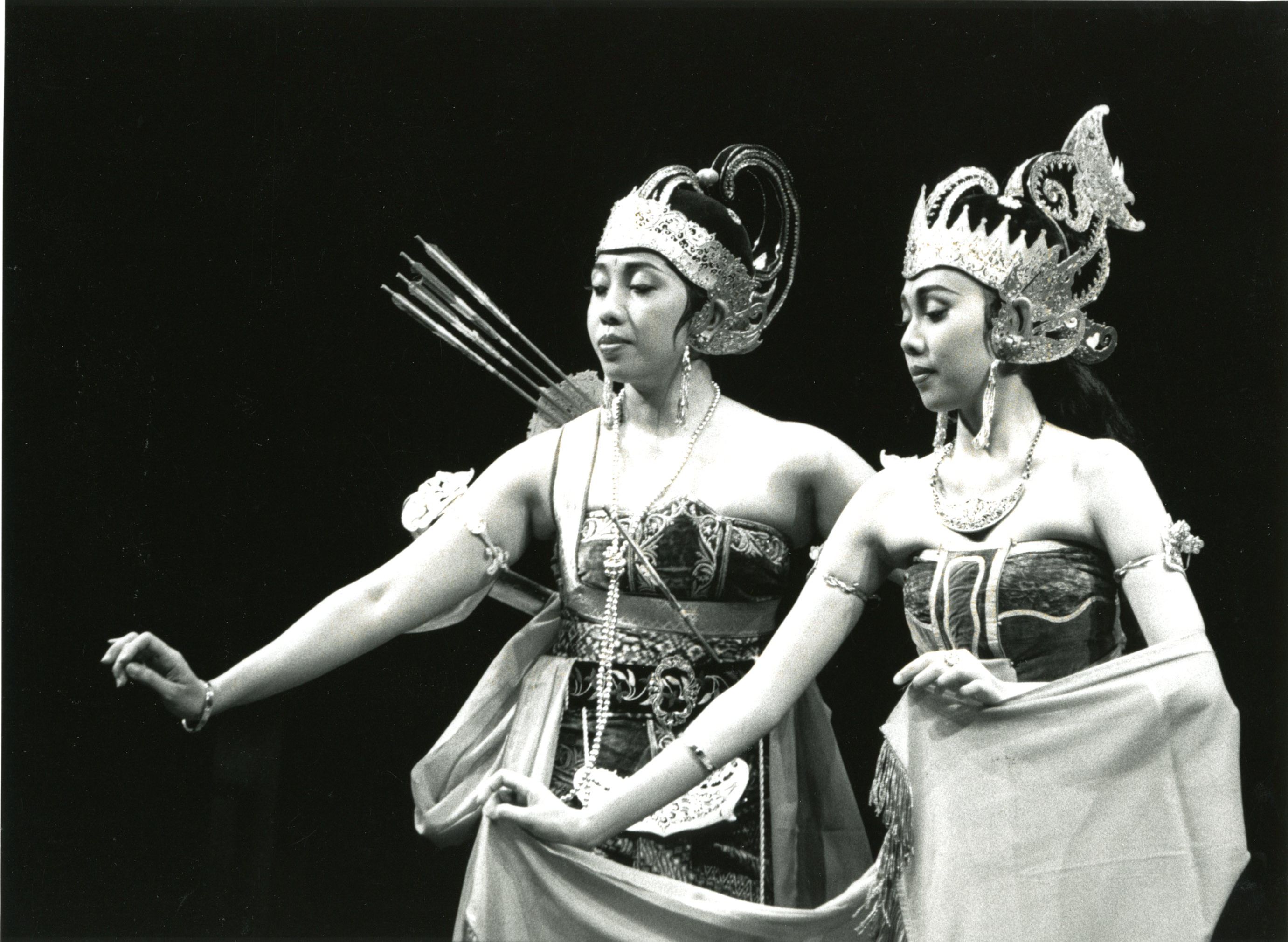
The first non-Western dance in the Music Theatre
From this season on, the Music Theatre’s Guest Programming department, led by Pieter Hofman, also brings many non-Western productions to the Netherlands. The ball is set rolling in April 1996 by the Indonesian Ensemble of the Kraton Surakarta.
96 / 97
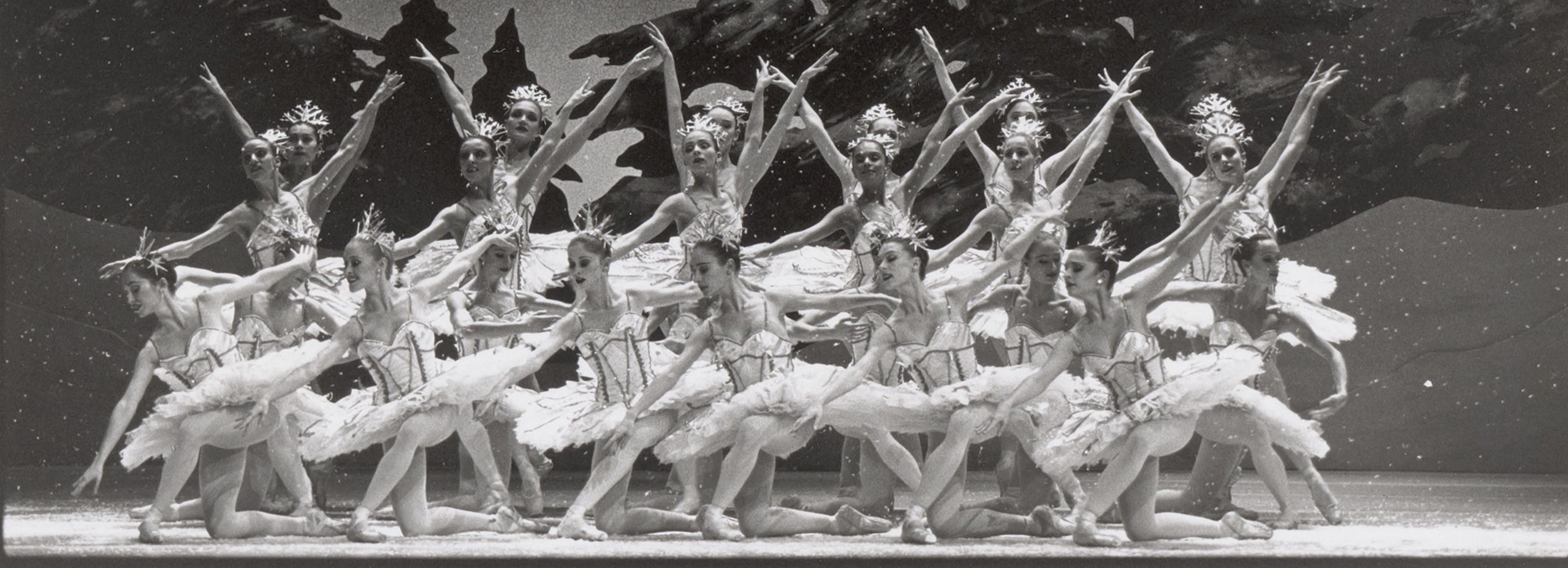
The Nutcracker and the Mouse King
The world premiere of The Nutcracker and the Mouse King, a completely Dutch interpretation of the ballet by artistic director Wayne Eagling and resident choreographer and designer Toer van Schayk, takes place on 13 December 1996.

A new Van Manen again at last
For the first time since Hans van Manen’s departure in 1987, Dutch National Ballet once again presents a new work by the Netherlands’ most celebrated choreographer: Three Pieces for HET. The ballet is received with great enthusiasm, with high praise for dancers Sofiane Sylve and Gaël Lambiotte – who were then still grand sujet and coryphée, respectively.
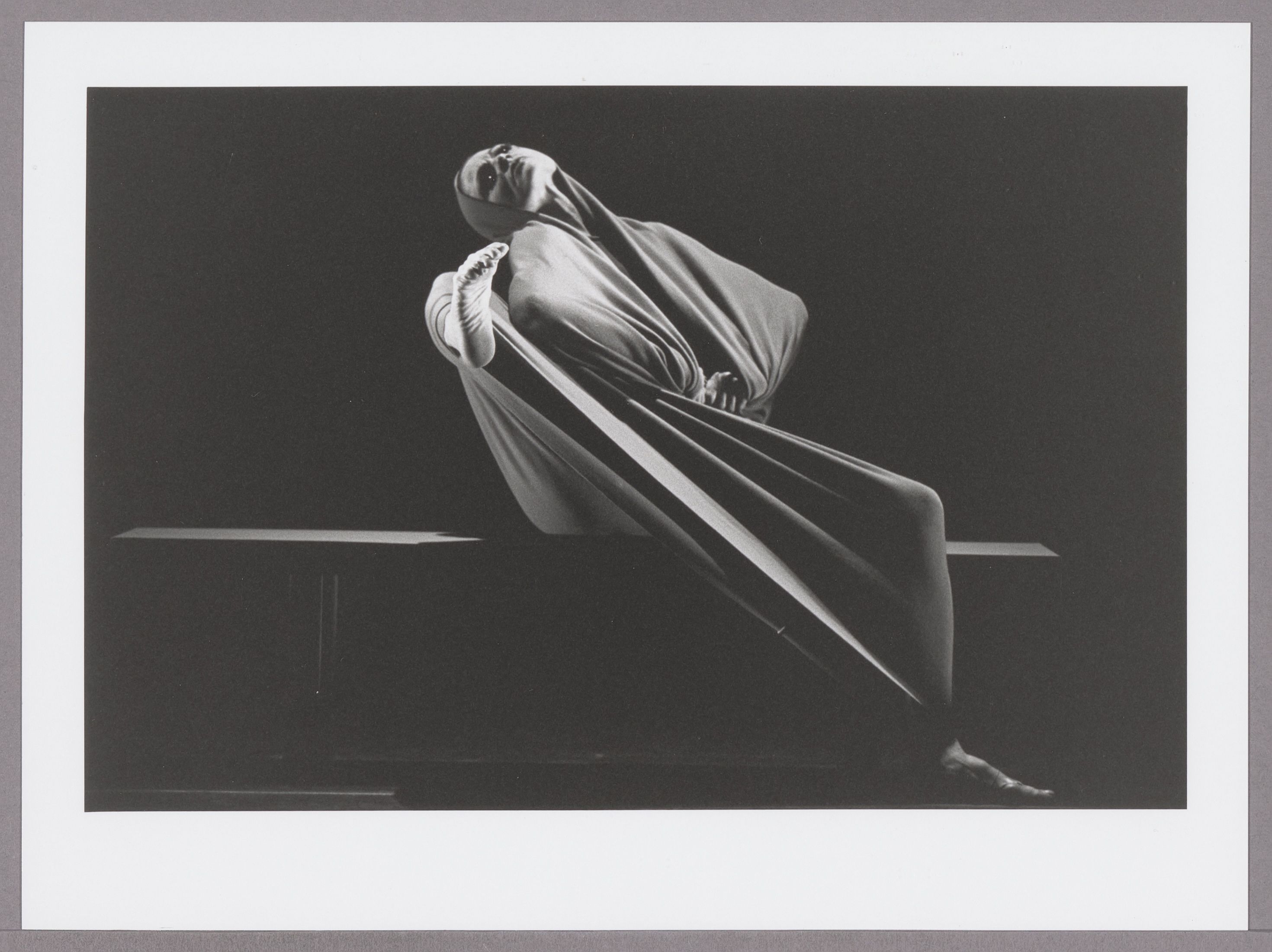
New Grahams
After last season’s performances by the American Martha Graham Dance Company, as part of the Guest Programming, this season Dutch National Ballet adds another two works to its repertoire by the ‘high priestess of modern dance’: Embattled Garden and Lamentation. In 1999, they are followed by Acts of Light and Errand into the Maze.
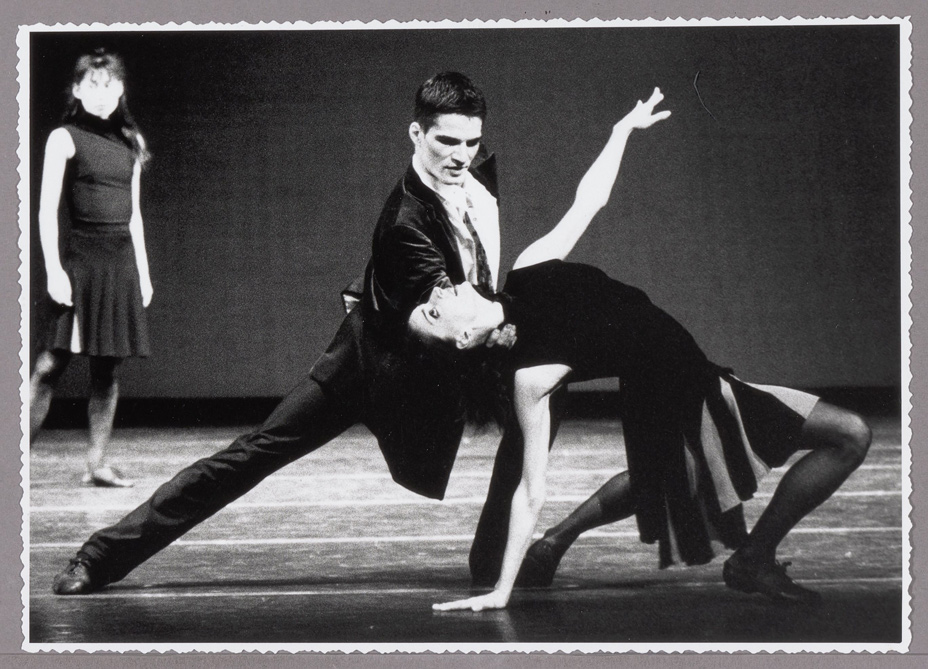
Rolling Stones
For the fourth time, Dutch National Ballet dances a piece set to music by The Rolling Stones. Following Visibility… By Chance by Koert Stuyf (1967), and Spoef (1968) and You can't always get what you want (1970) by Robert Kaesen, this season the company adds Rooster to its repertoire; a work by the British choreographer Christopher Bruce. “Dutch National Ballet is going down the macho route (..) Rooster is an uncomplicated, purely entertaining piece”, writes de Volkskrant.
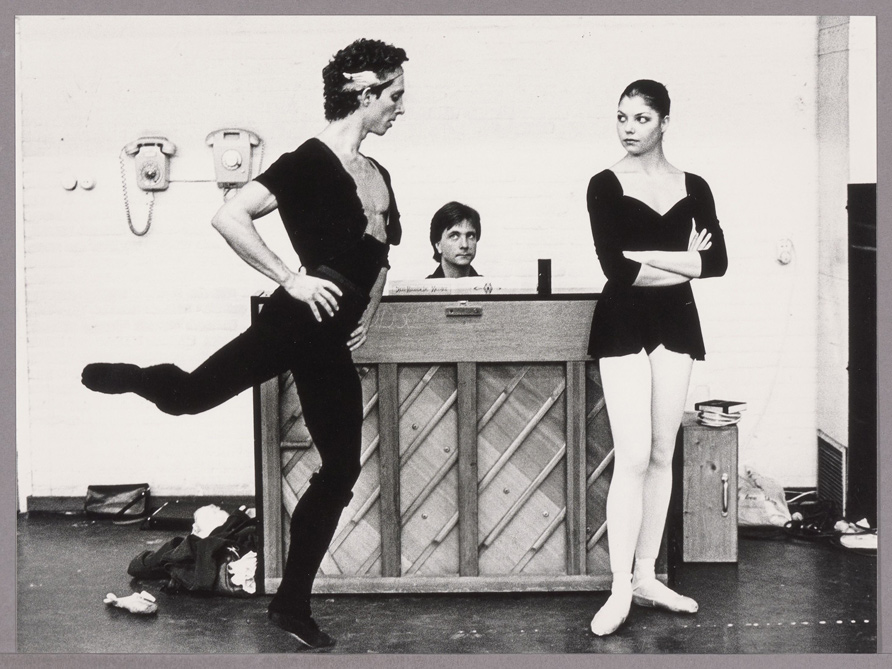
Rachel Beaujean ends her dancing career
Soloist Rachel Beaujean gives her last performance on 19 June 1997. Twenty years after joining Dutch National Ballet, she swaps the stage for a position as ballet mistress (she is now associate artistic director of the company). As one of Hans van Manen’s most important muses for many years, her farewell performance is Sarcasmen, Van Manen’s iconic ‘ballet for two’, which she has danced with Clint Farha on numerous occasions, in the Netherlands and abroad.
97 / 98
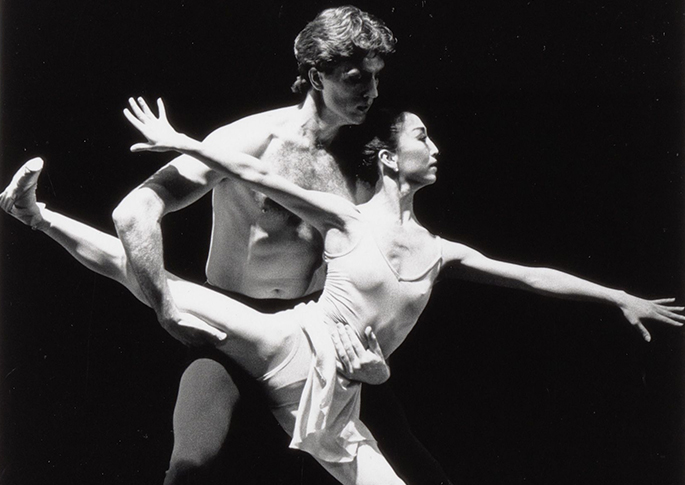
Programmes dedicated to Balanchine, Van Manen and Van Schayk
This season, besides a programme of three works by George Balanchine (Apollon Musagète, Serenade and Concerto Barocco), Dutch National Ballet gives its first full Hans van Manen programme for a long while, comprising his hit ballets Metaforen, 5 Tangos and Trois gnossiennes, and his most recent creation for the company Three Pieces for HET.

Prizes for Valerie Valentine and Caroline Sayo Iura
The American principal dancers Valerie Valentine and Caroline Sayo Iura both receive awards. Valentine, who has danced with Dutch National Ballet since 1973, receives the Golden Theatre Dance Prize from the VSCD for her whole oeuvre. Iura, who joined the company in 1978, receives the Merit Award from Dansersfonds '79. The jury calls her “a small ballerina who can fill the whole space with her presence”.
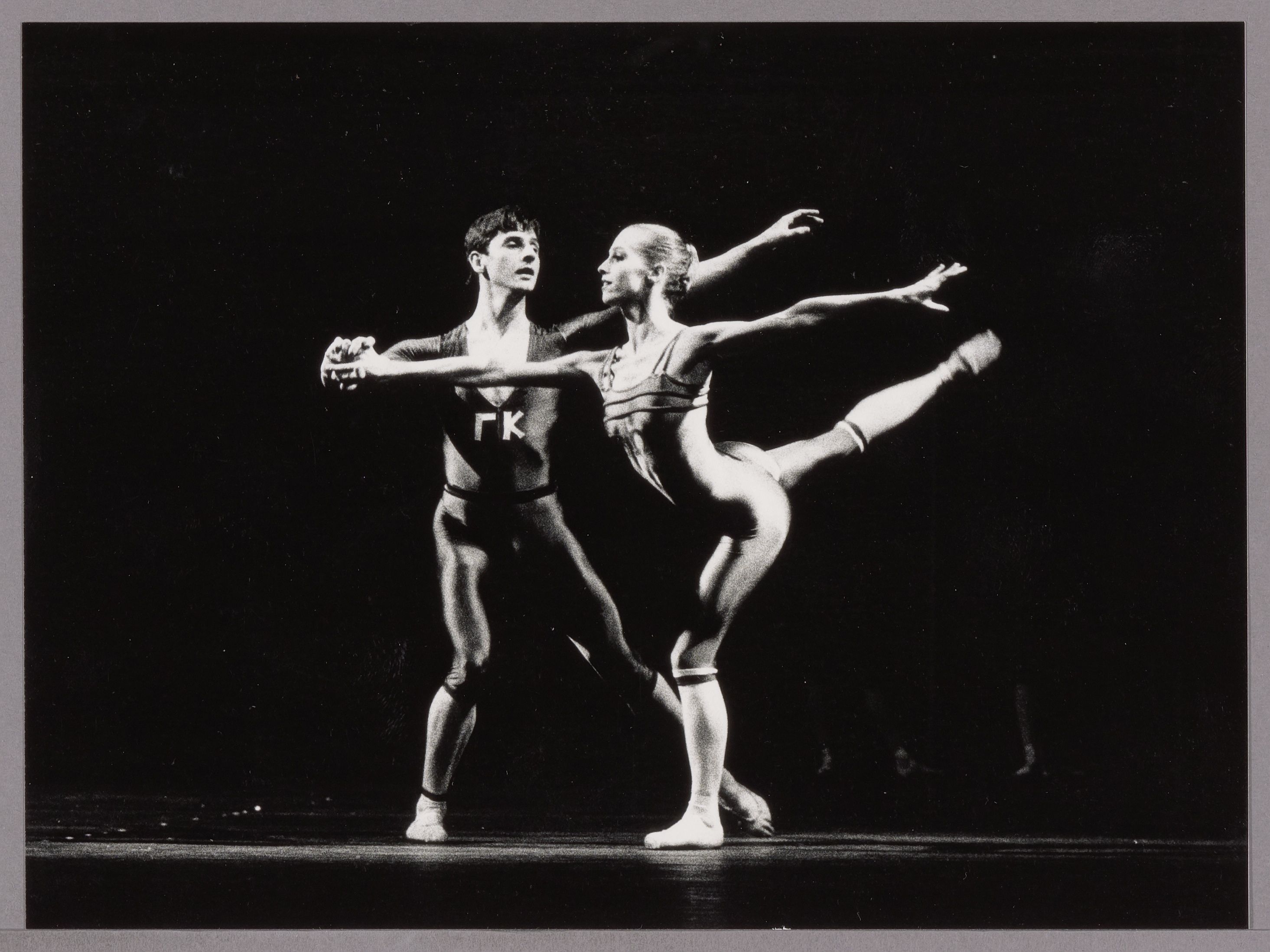
Dancer Alexander Money-Kyrle dies following a fall during a stage rehearsal
On 18 March 1998, during a stage rehearsal of Romeo and Juliet, the British dancer Alexander Money-Kyrle has a terrible fall. Two days later, he dies from his injuries. A memorial service for him, attended by his family, is given later at the Moses and Aaron Church.
98 / 99
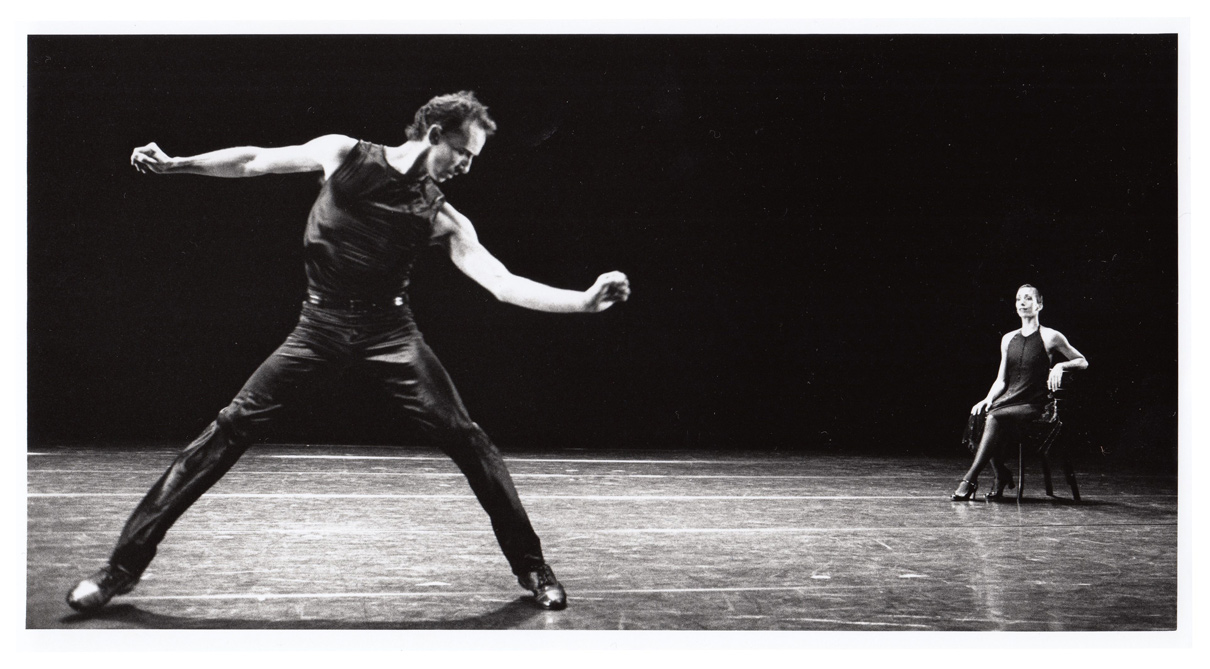
Success for Van Manen in Edinburgh
In August 1998, the famous Edinburgh Festival pays tribute to master choreographer Hans van Manen with an extensive retrospective. Dutch National Ballet presents two programmes dedicated to his work, and Nederlands Dans Theater is also a guest, presenting the world premiere of Manen’s Zero Hour. At the festival, Van Manen is presented with the Archangel, the Edinburgh Festival Critics' Award, in honour of his whole oeuvre.
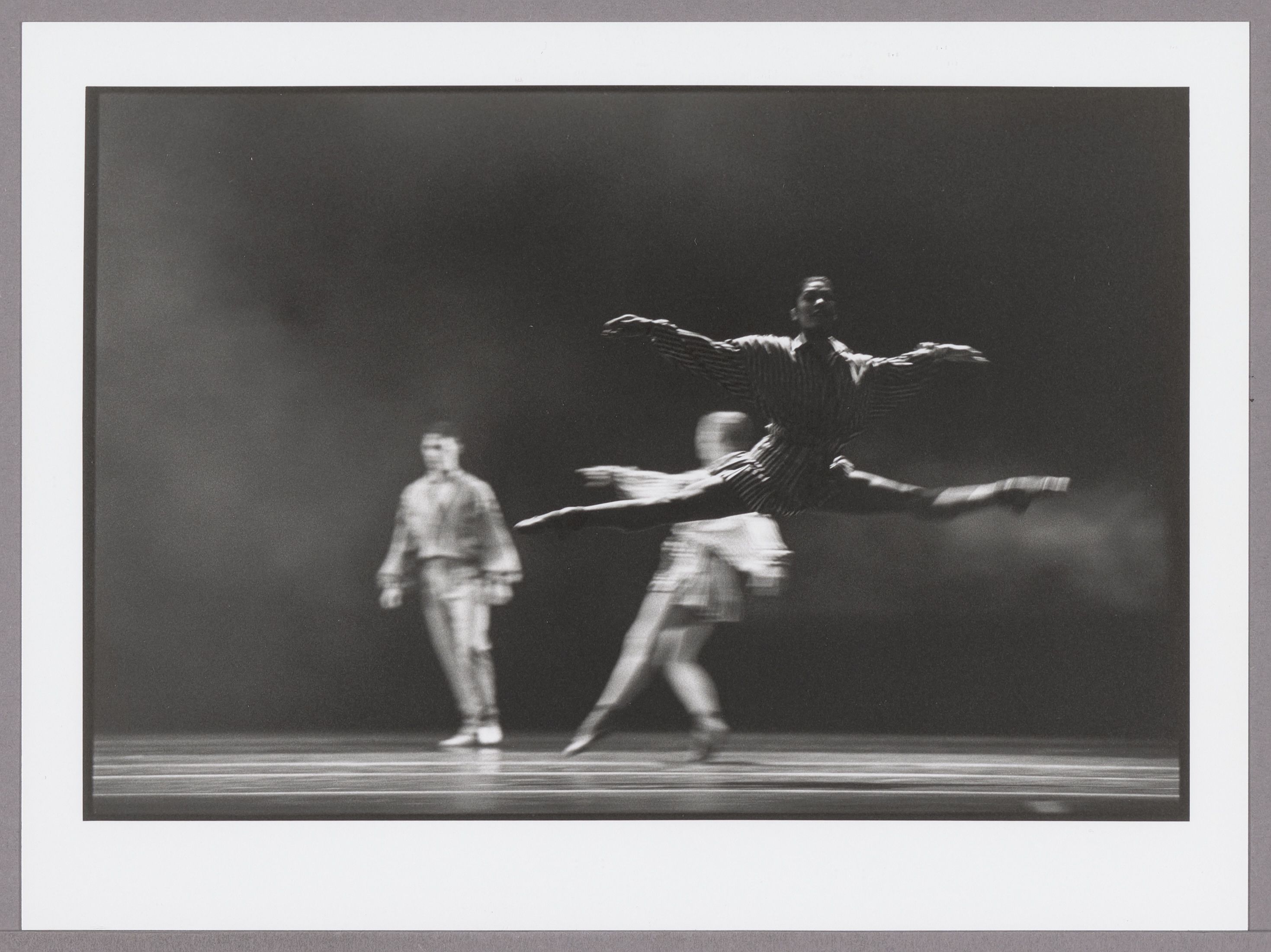
All-female
To open the season, in September 1998, Dutch National Ballet presents a programme of works by three female American choreographers. New to the repertoire are three creations by Doris Humphrey, all made around 1930, and Twyla Tharp’s In the Upper Room from 1986. The programme is completed by Carolyn Carlson’s Slow, heavy and blue (in Dutch National Ballet’s repertoire since 1984).
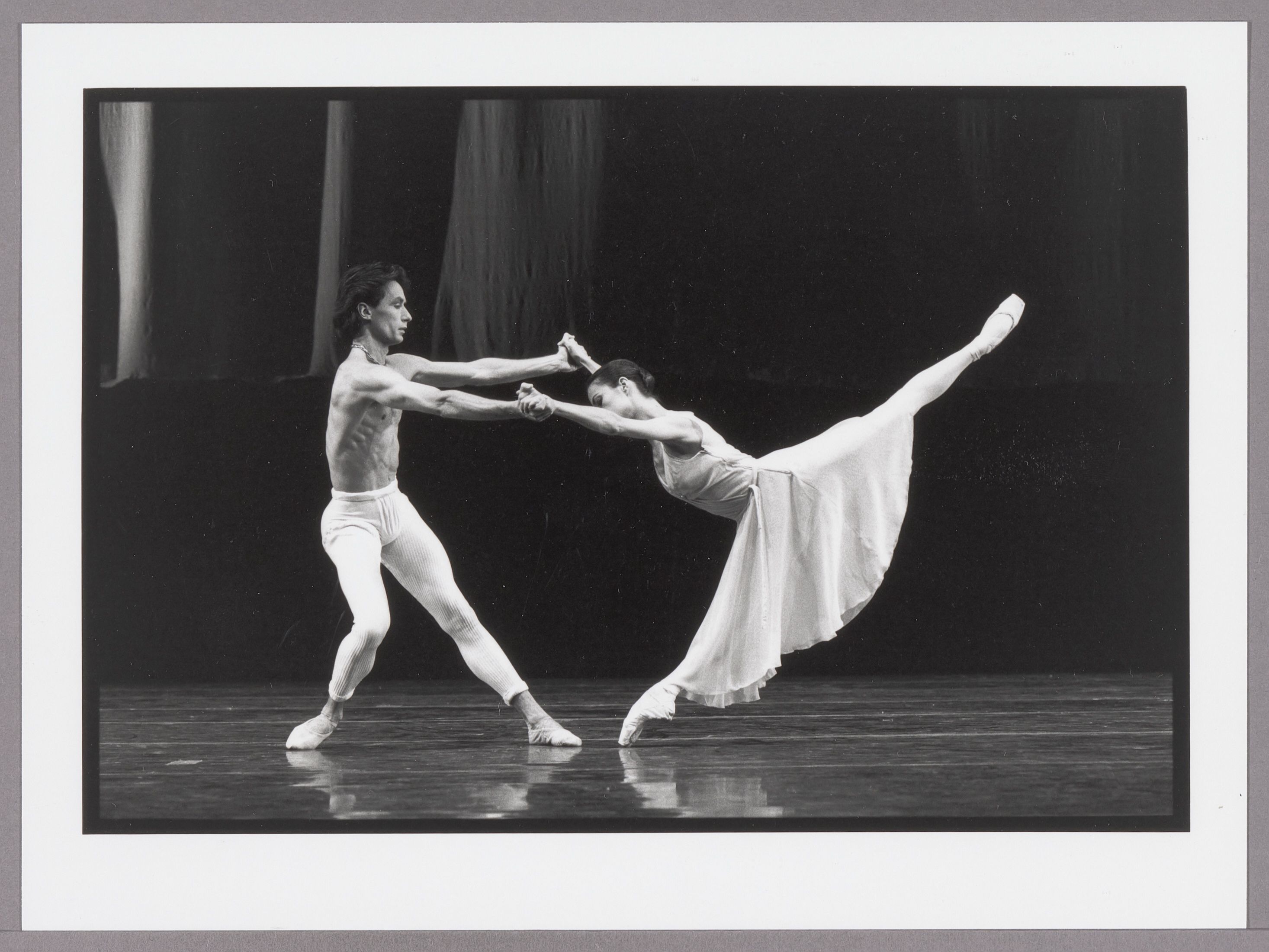
Merit Award for Wim Broeckx
This season, Dansersfonds '79 presents its annual Merit Award to principal dancer Wim Broeckx, who joined Dutch National Ballet in 1982. The jury praises his “technical ability, mature artistic interpretation of many roles, infectious dance passion and evident concern for his colleagues”.
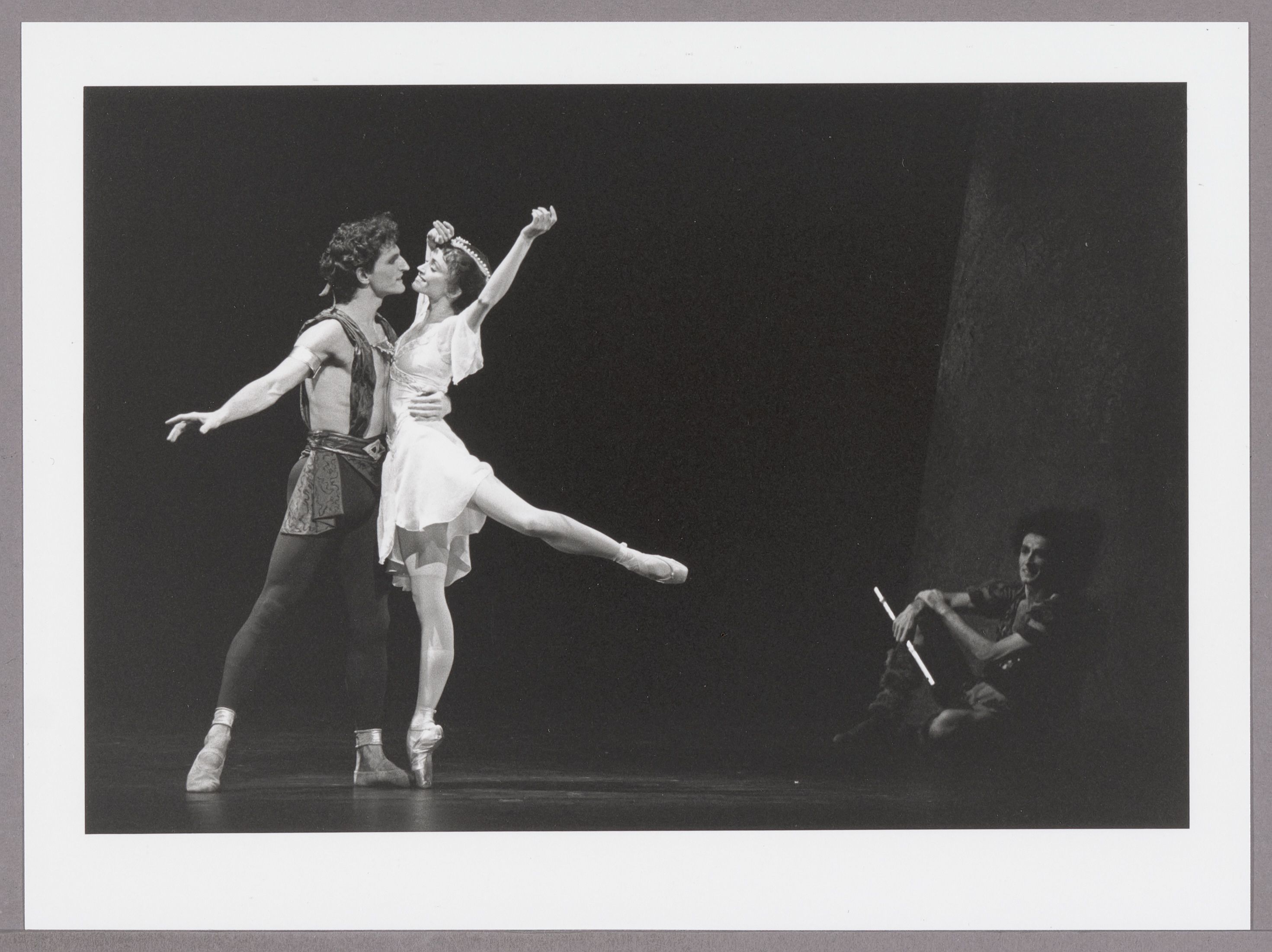
Magic Flute
In February 1999, Wayne Eagling and Toer van Schayk present their second joint full-length production: Magic Flute, based on Mozart’s famous opera Die Zauberflöte. Whereas their production of The Nutcracker and the Mouse King was an overwhelming success, most critics were thoroughly disappointed by Magic Flute.
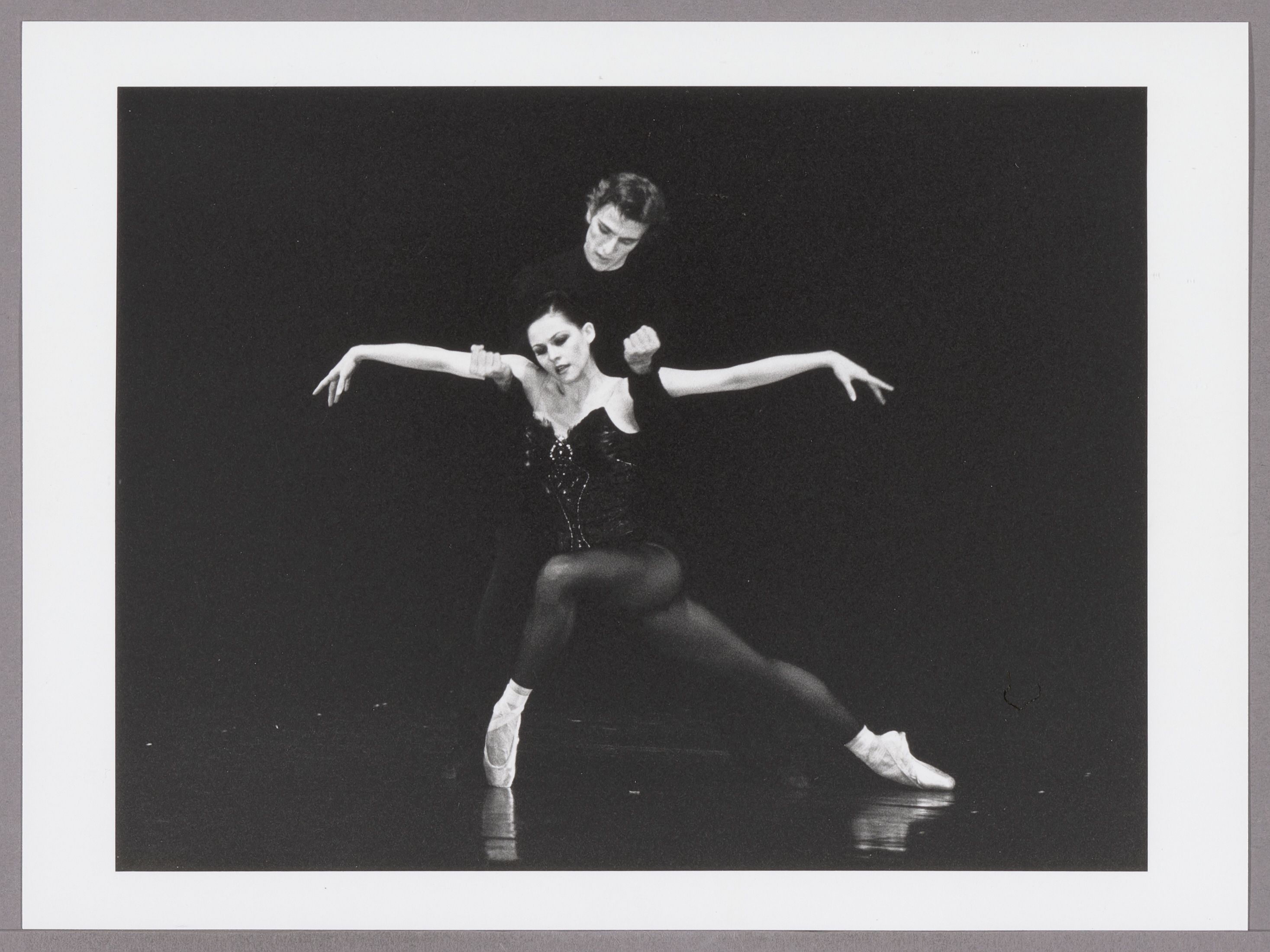
Debut work by David Dawson
Following previous works for the choreographic workshop, the British dancer David Dawson creates his first ballet for Dutch National Ballet’s regular programme: Psychic Whack, to music by Thom Willems. “A dynamic, dazzling and abstract dance piece (..) a succession of snappy (pointe work) combinations, with continuous strong accents and legs shooting up around the ears”, writes Algemeen Dagblad.

Farewell Clint Farha
After 26 years with Dutch National Ballet, principal Clint Farha is ending his dancing career. His great importance to the company - especially in the works of resident choreographers Rudi van Dantzig, Hans van Manen and Toer van Schayk - is underlined in all national newspapers.
99 / 00
Artifact in Edinburgh and Brazil
For the second year in a row, Dutch National Ballet is a guest at the Edinburgh Festival, this time performing William Forsythe’s Artifact. "(..) it's a journey we willingly, and often wonderingly, undergo and its pleasure is compounded by Dutch National Ballet who perform with an entranced intelligence that makes the work seem very much their own", writes The Guardian. Later in the season, the company also performs Artifact in Rio de Janeiro and São Paulo. In the latter city, special children’s performances are given, whereby the children are first taught some of the movements performed in the ballet by the ‘mud woman’.
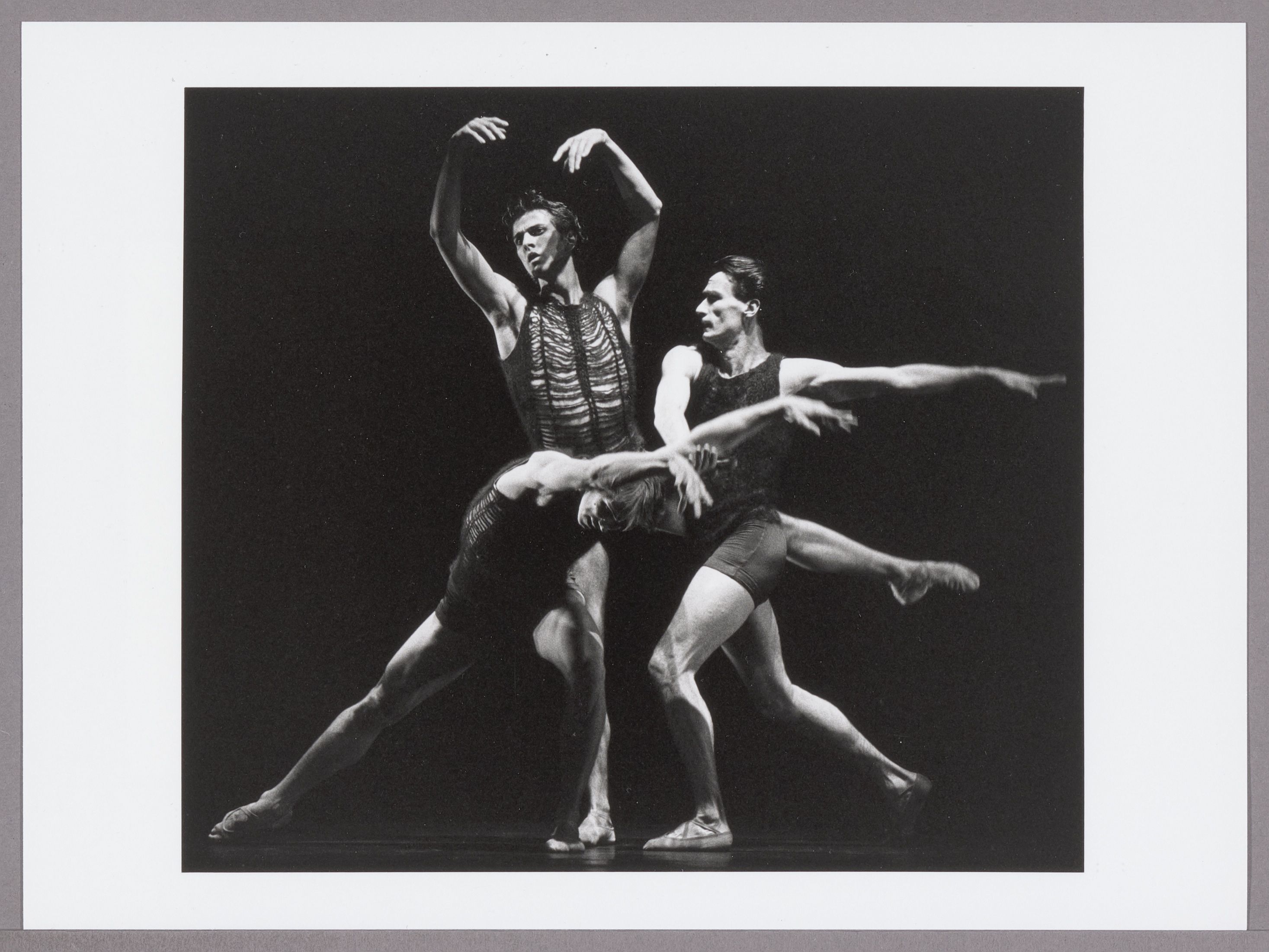
Stravinsky Festival
In February and March 2000, Dutch National Ballet presents a Stravinsky Festival of two programmes, comprising Apollon musagète, Symphony in Three Movements and Violin Concerto by George Balanchine, Les Noces by Bronislava Nijinska and the world premieres of Wayne Eagling’s Sacre du Printemps and Krzysztof Pastor’s Do not go gentle....

Van Manen in Carré again
Once again, Dutch National Ballet joins forces with Theater Carré. In May 2000, they present a Hans van Manen programme in the round at Carré, comprising Live, Trois gnossiennes, Dutch National Ballet’s premiere of Black Cake and the world premiere of Bach Pieces. About the latter work, Trouw writes, “Together, the four dancers create a sublime, sensual harmony (..) In this harmony, they savour the fruits ripened by Van Manen over 45 seasons, with breathtaking virtuosity.”
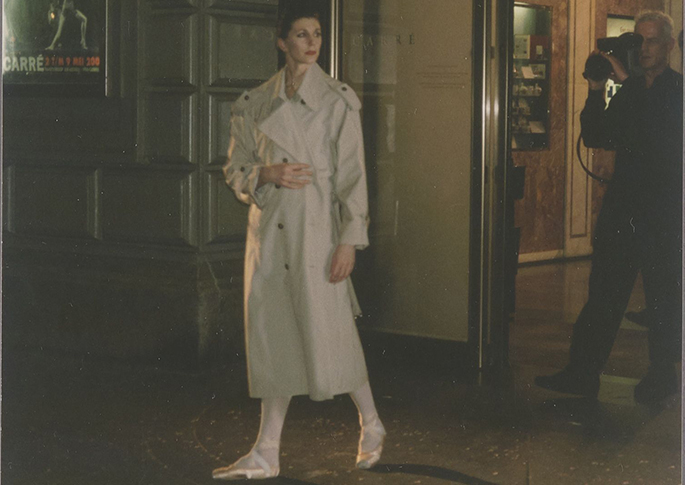
Farewell performance for Coleen Davis
On 9 May 2000, principal dancer Coleen Davis leaves Dutch National Ballet, after dancing with the company for over 23 years. She gives her farewell performance in Theater Carré, where she dances the ballet that launched her career 21 years earlier: Live by Hans van Manen. At the time, De Volkskrant wrote, “The performance by the youthful Coleen Davis (19) saw the birth of a star who creates an experience of rare, poignant beauty.” One week before her farewell performance, Davis receives the Merit Award from Dansersfonds '79.
Dance combination
In April and May 2000, Dutch National Ballet collaborates with Dansgroep Krisztina de Châtel and dance company LeineRoebana on the first edition of the Dance Combination, an initiative to introduce new audiences to Dutch dance through a wide variety of performances. The programme is presented in 25 theatres (mostly small ones) in the Netherlands.
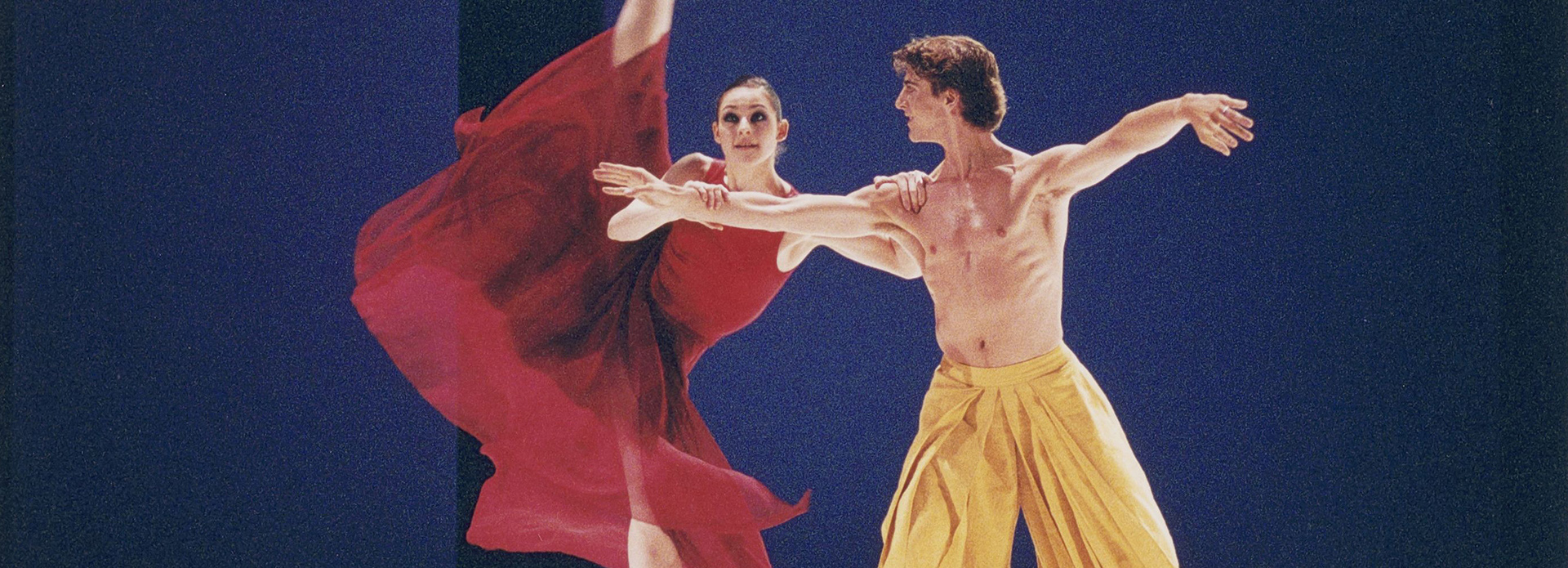
A Million Kisses to my Skin
In June 2000, Dutch National Ballet presents a Bach programme. Besides the second part of Artifact, it comprises the world premieres of Krzysztof Pastor’s In Light and Shadow and David Dawson’s A Million Kisses to my Skin. Dawson’s creation – which coincides with his departure from the company as a dancer – results in his international breakthrough. The ballet is still danced by companies all over the world today, including Semperoper Ballett, Wiener Staatsballett, Pacific Northwest Ballet, Royal New Zealand Ballet, Singapore Dance Theater and - in 2022 - Tokyo Ballet.
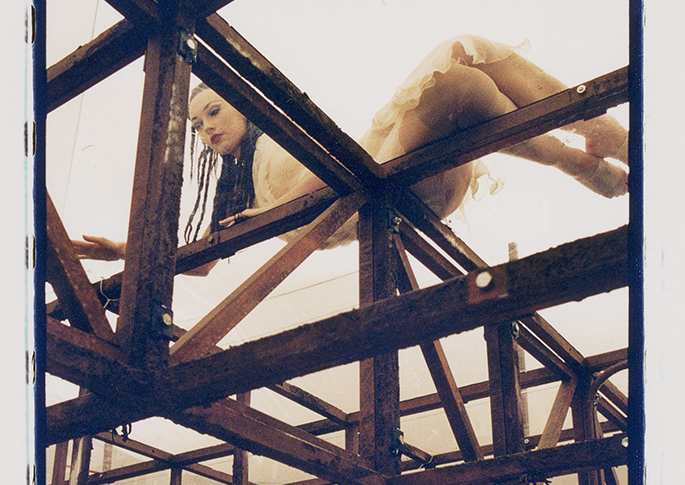
Access All Areas
The season closes with Access All Areas, for which Dutch National Ballet collaborates with Slagwerk Den Haag. The audience are led to the stage over a gangway that is raised, where choreography by Redha Benteifour and Ashley Page is performed at various places on stage and behind it. The reviews of the production are quite critical. For instance, Trouw writes, “In 85 absolutely dreadful minutes, Dutch National Ballet rivals Holiday on Ice or the MGM Hollywood studios.”
00 / 01
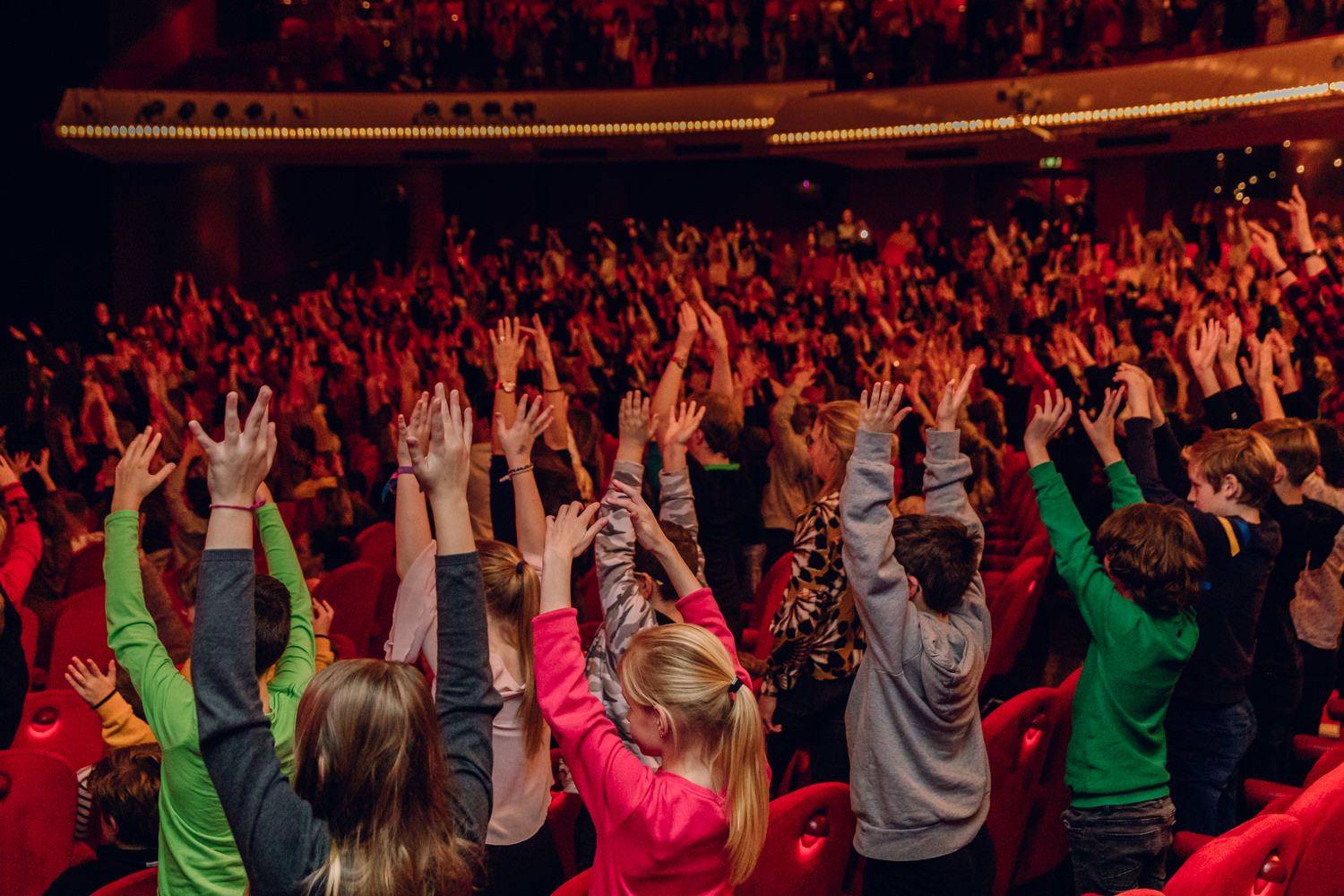
First schools’ matinee in the Music Theatre
At the initiative of artistic director Wayne Eagling, the first schools’ matinee is given in the Music Theatre (now Dutch National Opera & Ballet) on 9 October 2000. The performance is an abridged version of The Sleeping Beauty, presented by Yvon Jaspers. It is still an experiment (attended by around 500 schoolchildren), but from now primary school pupils in Amsterdam and the rest of North Holland are regularly treated to specially adapted versions of the great ballet classics. For instance, on 14 September 2001, a performance of Sir Frederick Ashton’s Cinderella is given to 1000 children, presented by Kasper van Kooten.
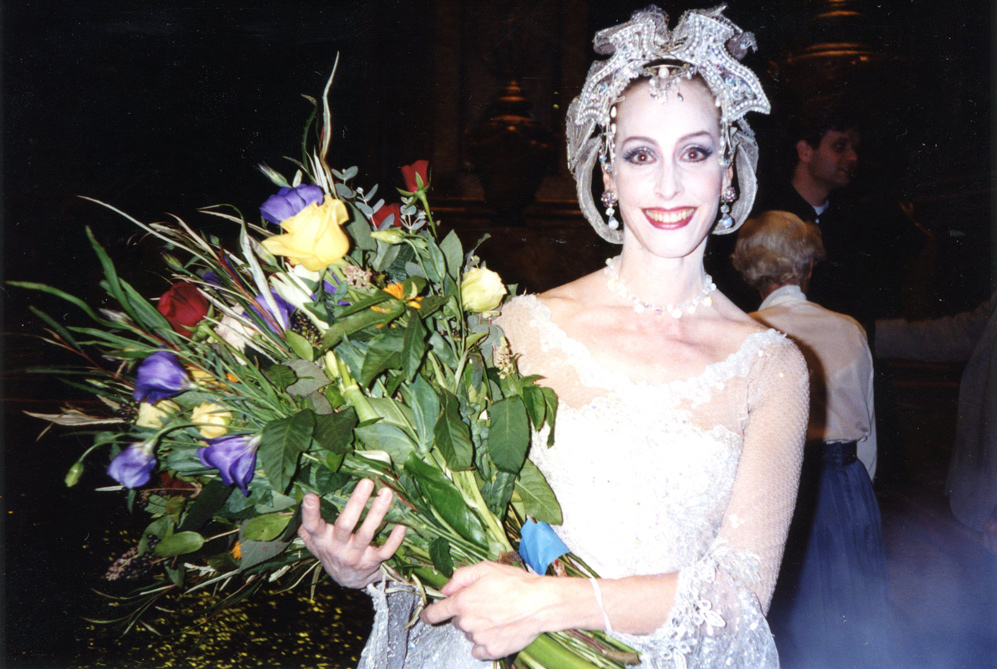
Dansersfonds prizes for Jane Lord and Krzysztof Pastor
On 1 November 2000, principal dancer Jane Lord receives the Merit Award from Dansersfonds '79. The presentation is made shortly after her farewell performance, in which she performs the role of the Lilac Fairy in Sir Peter Wright’s Sleeping Beauty. Krzysztof Pastor receives the Choreography Prize (awarded only once by the fund).
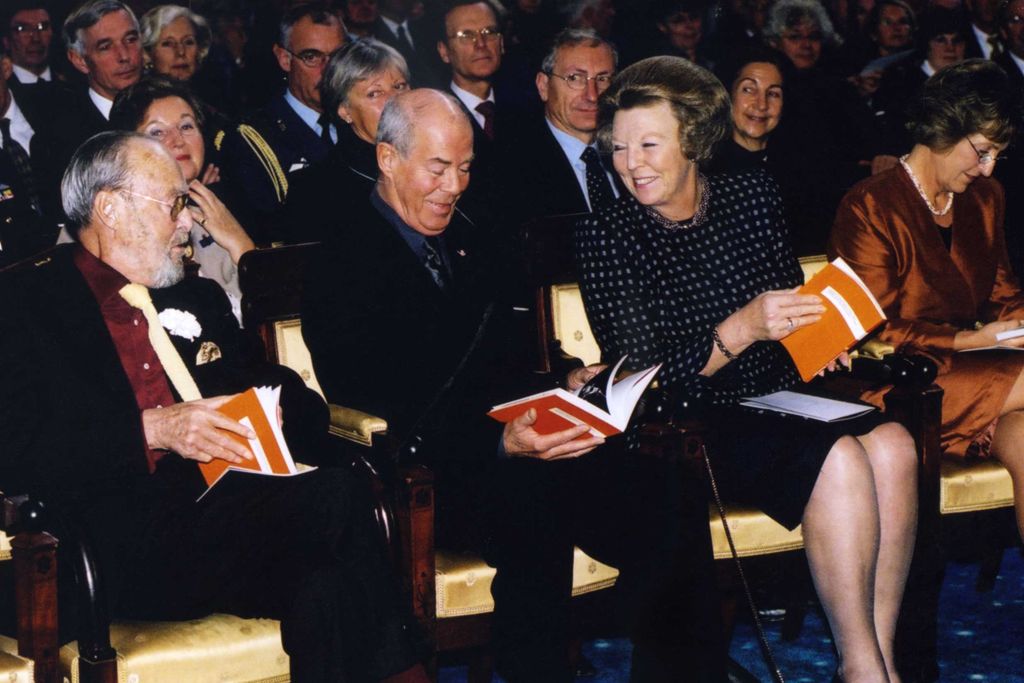
Erasmus Prize for Hans van Manen
On 3 November 2000, choreographer Hans van Manen is presented with the prestigious Erasmus Prize, by Prince Bernhard. By awarding him the prize, the Praemium Erasmianum Foundation is also honouring Dutch dance as a whole. The foundation calls Van Manen “an influential and inspiring artist, who is of inestimable value to the world of dance and to dance in the world”. At the presentation ceremony at the Royal Palace on Dam Square, Van Manen expresses strong criticism of the government’s address, in which he thinks dance comes off badly.
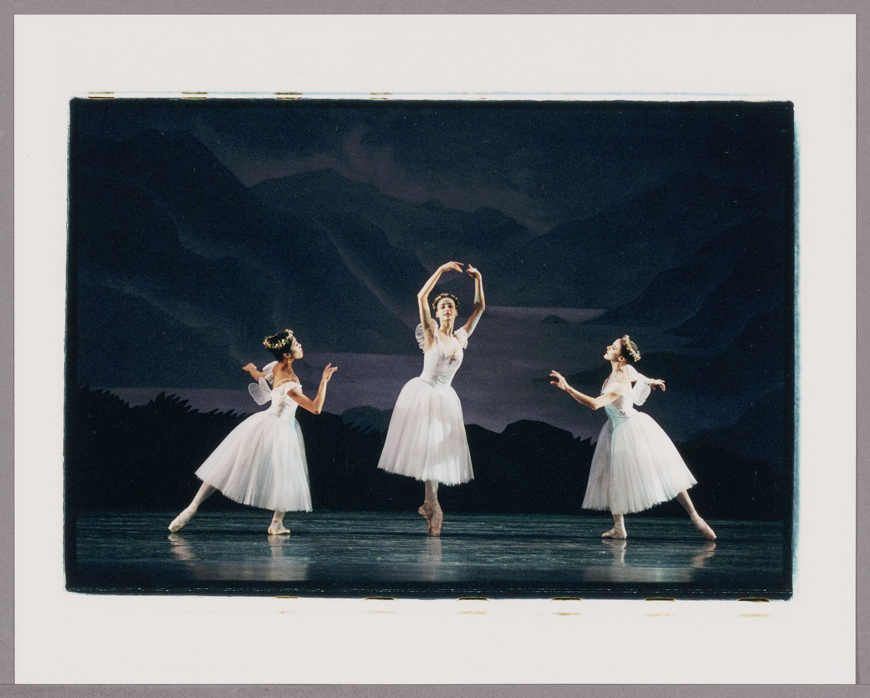
New version of La Sylphide
Following Harold Lander’s version in the 1962/1963 season, Dutch National Ballet presents August Bournonville’s La Sylphide for the second time. It is one of the earliest surviving ballets, dating from 1832. This time, the company presents a version by Bournonville expert Dinna Bjørn, who also comes to rehearse the ballet. Toer van Schayk designs the new sets and costumes.
Laurence Olivier Award nomination for Hans van Manen’s Live
In May 2001, Dutch National Ballet gives six performances at Sadler's Wells Theatre in London. Divided over two programmes, the company dances works by George Balanchine, Krzysztof Pastor and various ballets by Hans van Manen, whereby Live is the closing ballet in each programme. A few months later, Live is nominated for a Laurence Olivier Award.
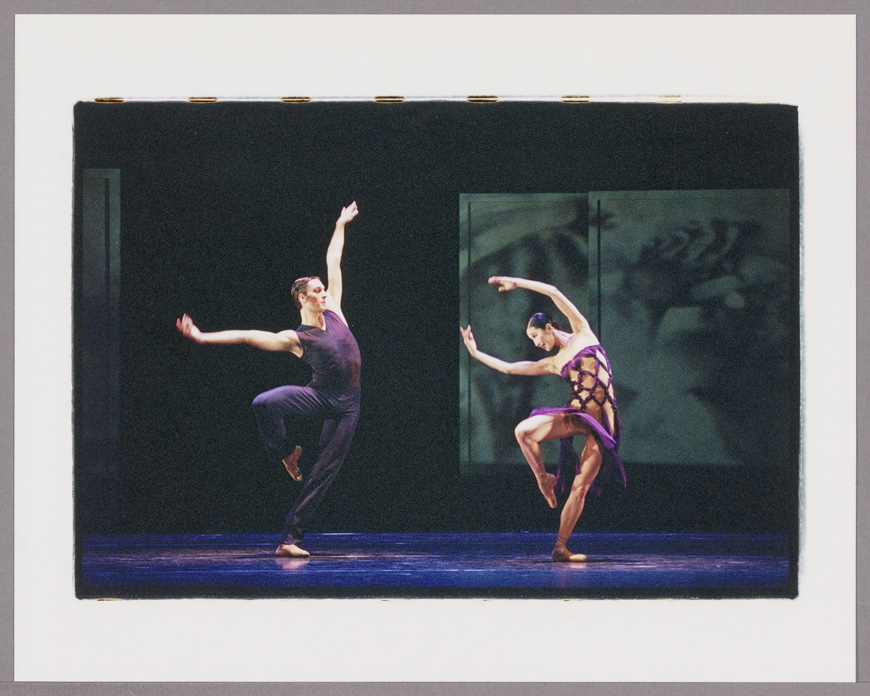
Kurt Weill
Dancer/resident choreographer Krzysztof Pastor creates his first full-length ballet, Kurt Weill, set to a collage of compositions by the German composer. De Volkskrant writes, "Pastor and Weill provide a whole evening of dance pleasure (..) Dance, images, music and singing combine seamlessly in this Gesamtkunstwerk." In 2002, the production is nominated in three categories for a Prix Benois de la Danse, also known as the ‘Oscar of Dance’.
State visit to Russia
On 6 June 2001, Dutch National Ballet provides the ‘reciprocal entertainment’ during a state visit by Queen Beatrix to Russia. Performing in the presence of President Putin at the Maly Theatre in Moscow, the company dances the second part of William Forsythe’s Artifact, Hans van Manen’s Adagio Hammerklavier and the fourth part of George Balanchine’s Brahms Schönberg Quartet.
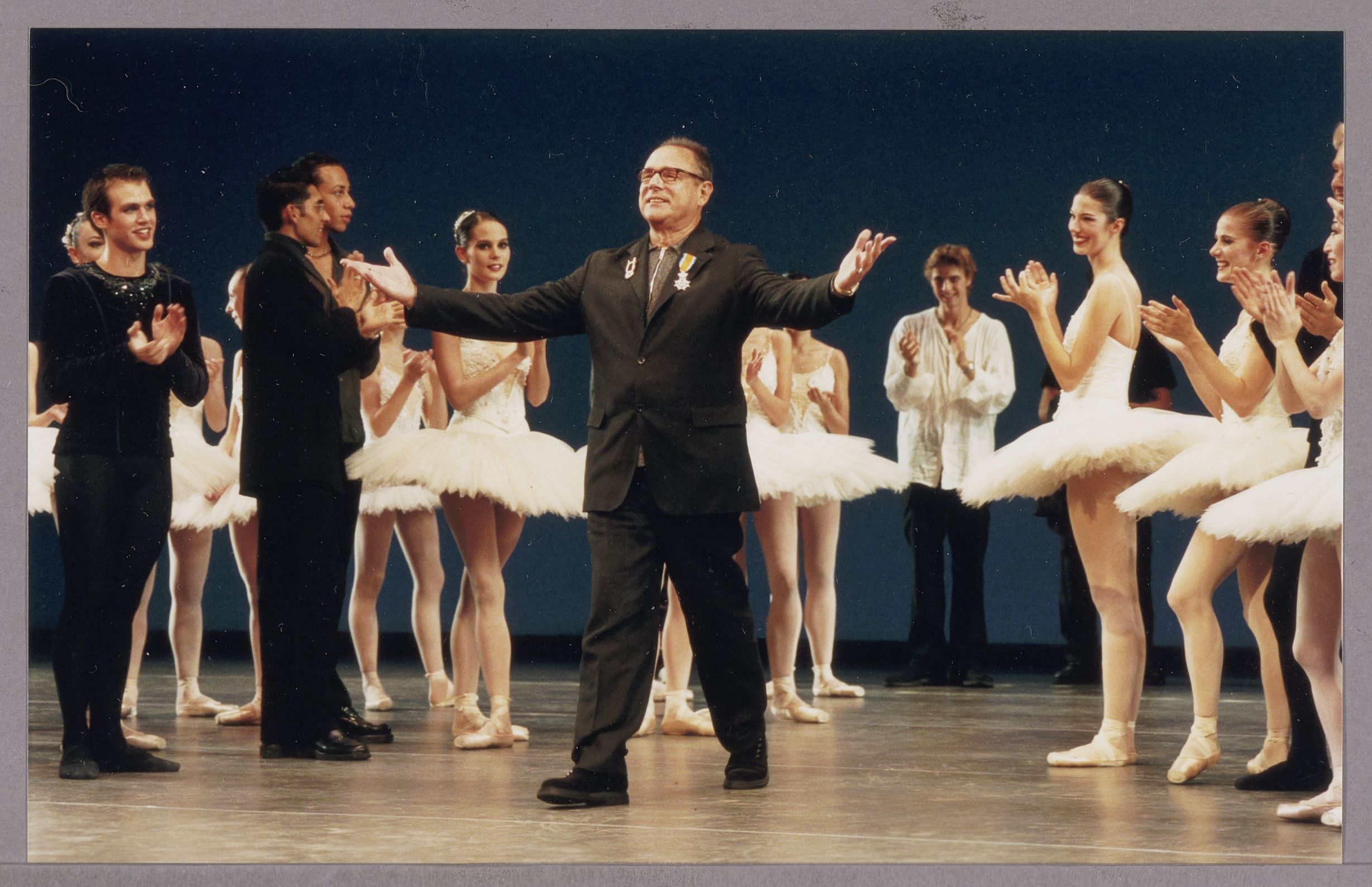
Reuven Voremberg retires
This season Reuven Voremberg retires, after working with Dutch National Ballet for over 40 years – first as a dancer, then as a ballet master and finally as head of the artistic staff. The Balanchine programme presented by the company in September 2000 is dedicated to him, and on the opening night Voremberg is appointed Knight of the Order of Orange-Nassau.
